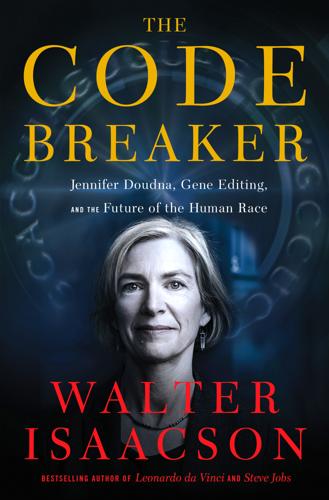
The Code Breaker: Jennifer Doudna, Gene Editing, and the Future of the Human Race
by
Walter Isaacson
Published 9 Mar 2021
Church, and Paola Arlotta, “Efficient Construction of Sequence-Specific TAL Effectors for Modulating Mammalian Transcription,” Nature Biotechnology, Jan. 19, 2011. Chapter 23: George Church 1. This section is based on author’s interviews and visits with George Church and also Ben Mezrich, Woolly (Atria, 2017); Anna Azvolinsky, “Curious George,” The Scientist, Oct. 1, 2016; Sharon Begley, “George Church Has a Wild Idea to Upend Evolution,” Stat, May 16, 2016; Prashant Nair, “George Church,” PNAS, July 24, 2012; Jeneen Interlandi, “The Church of George Church,” Popular Science, May 27, 2015. 2. Mezrich, Woolly, 43. 3. George Church Oral History, National Human Genome Research Institute, July 26, 2017. 4.
…
Fortunately, he was working in the most exciting lab at Harvard Medical School, which was run by a professor who was beloved for embracing new ideas, sometimes wildly, and who fostered a jovial atmosphere that encouraged exploration: Doudna’s longtime friend, the avuncular and bushy-bearded George Church, one of the contemporary legends of biology and a scientific celebrity. He became for Zhang, as he did for almost all of his students, a loving and beloved mentor—until the day Church believed that Zhang had betrayed him. CHAPTER 23 George Church Tall and gangly, George Church looks like, and actually is, both a gentle giant and a mad scientist. He is one of those iconic characters who is equally charismatic on Stephen Colbert’s TV show and in his bustling Boston lab amid a gaggle of adoring researchers.
…
Le Cong, Fei Ann Ran, David Cox, Shuailiang Lin… Luciano Marraffini, and Feng Zhang, “Multiplex Genome Engineering Using CRISPR/Cas Systems,” Science, Feb. 15, 2013 (received Oct. 5, 2012; accepted Dec. 12; published online Jan. 3, 2013). 3. Author’s interviews with George Church, Eric Lander, and Feng Zhang. 4. Author’s email interviews with Le Cong. 5. Author’s interview with George Church. 6. Prashant Mali… George Church, et al., “RNA-Guided Human Genome Engineering via Cas9,” Science, Feb. 15, 2013 (received Oct. 26, 2012; accepted Dec. 12, 2012; published online Jan. 3, 2013). Chapter 27: Doudna’s Final Sprint 1. Pandika, “Jennifer Doudna, CRISPR Code Killer.” 2.
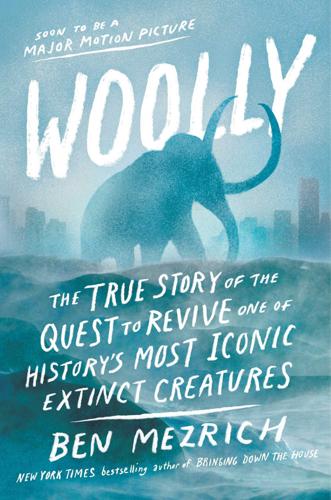
Woolly: The True Story of the Quest to Revive History's Most Iconic Extinct Creature
by
Ben Mezrich
Published 3 Jul 2017
“We realized there is a human analogy,” Roth continued. A picture of a cat with a white beard appeared on the screen, and the audience started to laugh. “We begin to let the cat out of the bag,” Roth said. The cat morphed into a picture of George Church. The letters below the cat—the title of the symposium, GCAT60, began to move, until Church suddenly realized what they really stood for. GC-AT-60. George Church At 60. He’d been so caught up in his work, in elephants and futuristic ideas, he had forgotten that it was only a short time before his sixtieth birthday. No wonder he had recognized many of the faces in the room.
…
_tid=492ac6ac-2e8e-11e7-adc3-00000aacb360&acdnat=1493657610_316226a04082e8a7db2290a1252e6bf4. Klinghoffer, David. “An Apology for Harvard’s George Church (of Neanderthal baby fame?).” January 23, 2013. EvolutionNews.org. Larmer, Brook. “Of Mammoths and Men.” April 2013. NationalGeographic.com. Lewis, Danny. “Last Woolly Mammoths Died Isolated and Alone.” May 8, 2015. Smithsonian Magazine. Lewis, Tanya. “Woolly Mammoth DNA Inserted into Elephant Cells.” March 26, 2015. Livescience.com. Miller, Peter. “George Church, the Future Without Limit.” June 2014. National Geographic. Mullin, Emily. “Obama advisors urge action against Crispr Bioterror threat.”
…
Teams of young postdocs, grad students, and harried fourth-year med students huddled over high-tech workstations, engaged in what appeared to be a highly choreographed dance involving pipettes, Petri dishes, and DNA-sequencing arrays. Gloved hands moved in and out of sterilization chambers and secure specimen freezers, and masked and youthful faces hovered over test tubes, twirling like small tornadoes within chrome-plated centrifuges. In the middle of it all, Dr. George Church strolled through the beautiful chaos, a grin painted above his billowing white beard. Science was supposed to be staid, boring, a slow drip of sap running down a tired maple tree. But even on a bad day, Church’s lab was anything but dull, and tonight, the place was running at a hundred thousand RPM.
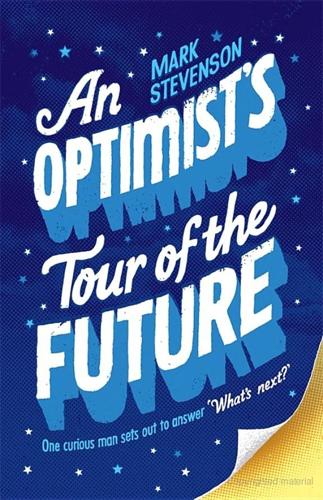
An Optimist's Tour of the Future
by
Mark Stevenson
Published 4 Dec 2010
The map in question was the result of the first coast-to-coast overland exploration of the United States and the ‘trusted aide’ was Meriwether Lewis. But Clinton had come to talk about another map: ‘Without a doubt the most important, most wondrous map ever produced by humankind.’ Seventeen years earlier, a man called George Church and a handful of his peers suggested making the map Clinton was referring to: a completed ‘human genome’ – a writing down of the genetic cookbook from which each human is uniquely baked. It’s a cookbook small enough to be stored in nearly every one of your cells but contains enough information to explain why one bag of mostly oxygen, hydrogen and carbon is Bill Clinton, while a similar quantity of exactly the same stuff is you.
…
So getting hold of a copy (otherwise known as ‘having your genome sequenced’) could soon play a part in saving your life. More than that, in fact. It may mean that you hardly have to visit the doctor, because you won’t get ill in the first place. Anyone on a quest to understand biotechnology at some point comes to the work of George Church – the man who helped kick off the human genome project all those years ago. Church is a turtle-breeding, dyslexic polymath who is currently professor of genetics at Harvard Medical School. He is a man widely regarded as one of, if not the key architect of the unfolding biotechnology revolution – according to Wired magazine a man so smart that ‘even the experts don’t always get what he’s talking about.’
…
The only thing that’s bothering me is why everyone I speak to asks me where in Australia I’m from. In the Public Gardens I come across a demonstration calling for health care reform. It’s interesting to think that many of the medical conditions these demonstrators worry about could become a thing of the past if work like George Church’s continues to bear fruit. With the sun setting, I approach my hotel, passing the Broad Institute – a joint initiative by the mighty universities of Harvard and MIT. It is one of the many labs around the world spewing out documents full of A’s, T’s, G’s and C’s – labs that are writing down and cataloguing the DNA of pretty much anything they can get their hands on (including, in the Broad’s case, that elephant I mentioned earlier).
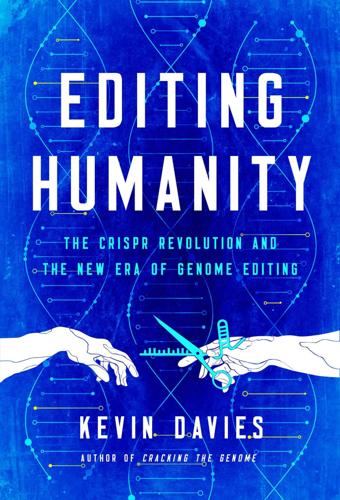
Editing Humanity: The CRISPR Revolution and the New Era of Genome Editing
by
Kevin Davies
Published 5 Oct 2020
Nathaniel Comfort, “A Whig history of CRISPR,” Genotopia, January 18, 2016, https://genotopia.scienceblog.com/573/a-whig-history-of-crispr/. 6. Jennifer Doudna, “PubMed Commons,” 2016, posted by Richard Sever, https://twitter.com/search?q=pubmed%20commons%20charpentier&src=typd. 7. Bob Grant, “Credit for CRISPR: A Conversation with George Church,” The Scientist, December 29, 2015, https://www.the-scientist.com/news-analysis/credit-for-crispr-a-conversation-with-george-church-34306. 8. George Church, interview, Boston, August 2, 2019. 9. Samuel Sternberg, “Humans By Design: Covering the Genome Editing Revolution,” New York University, March 6, 2018, https://journalism.nyu.edu/about-us/event/2018-spring/humans-by-design-covering-the-gene-editing-revolution/. 10.
…
M. Church, “Sponsored sequencing: our vision for the future of genomics,” Genetic Engineering & Biotechnology News, June 11, 2019, https://www.genengnews.com/commentary/sponsored-sequencing-our-vision-for-the-future-of-genomics/. 4. Stephen Colbert, “George Church,” Time, April 20, 2017, https://time.com/collection/2017-time-100/4742749/george-church/. 5. Constance Grady, “It’s Margaret Atwood’s dystopian future, and we’re just living in it,” Vox, June 8, 2016, https://www.vox.com/2016/6/8/11885596/margaret-atwood-dystopian-future-handmaids-tale-maddaddam-pigoons. 6. Michael Specter, “How the DNA revolution is changing us,” National Geographic, August 2016, https://www.nationalgeographic.com/magazine/2016/08/dna-crispr-gene-editing-science-ethics/. 7.
…
These Clustered Regularly Interspaced Short Palindromic Repeats (the official acronym) were known to be the critical component of a natural bacterial immune system, a microbial missile defense shield to neutralize attack by certain viruses. Researchers in the Doudna and Charpentier labs reconfigured the molecular machinery to produce an ingenious method for precisely targeting and cutting genes and other DNA targets. Six months later, several groups, led by Feng Zhang at the Broad Institute and George Church at Harvard Medical School, showed that the DNA of mammalian cells could be edited using CRISPR. The prospect of being able to precisely edit almost any sequence of DNA, be it human, bacterial or of any other organism, was extraordinary. CRISPR’s ease of use was unlike anything seen before—a technical if not conceptual breakthrough that would transform science and medicine, and perhaps the very fabric of humanity.
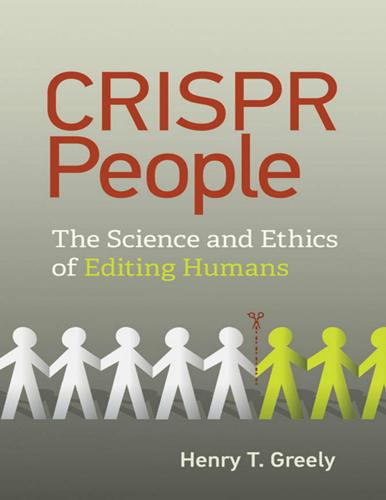
CRISPR People: The Science and Ethics of Editing Humans
by
Henry T. Greely
Published 22 Jan 2021
Jon Cohen, “‘I Feel an Obligation to be Balanced:’ Noted Biologist Comes to Defense of Gene Editing Babies,” Science, November 28, 2018, https://www.sciencemag.org/news/2018/11/i-feel-obligation-be-balanced-noted-biologist-comes-defense-gene-editing-babies. 7. http://arep.med.harvard.edu/gmc/tech.html. 8. George Church and Ed Regis, Regenesis: How Synthetic Biology Will Reinvent Nature and Ourselves (New York: Basic Books, 2012). 9. Philip Bethge and Johan Grolle, “Interview with George Church: Can Neanderthals Be Brought Back from the Dead?,” Spiegel Online, January 18, 2013, https://www.spiegel.de/international/zeitgeist/george-church-explains-how-dna-will-be-construction-material-of-the-future-a-877634.html. See also David Klinghoffer, “An Apology for Harvard’s George Church (of Neanderthal Baby Fame)?,” Evolution News, January 23, 2013, https://evolutionnews.org/2013/01/an_apology_for_. 10.
…
The article quotes three other American scientists, Kiran Musunuru, Eric Topol, and George Church, to provide ethical assessments of the work. That part of the article begins, “Some scientists were astounded to hear of the claim and strongly condemned it.” Musunuru, who appears in an AP video distributed with the story, and Topol were strongly opposed—Musunuru calls it “unconscionable,” and Topol says, “far too premature.” Church’s position was not as clear: However, one famed geneticist, Harvard University’s George Church, defended attempting gene editing for HIV, which he called “a major and growing public health threat.”
…
“We’re dealing with the operating instructions of a human being. It’s a big deal.”1 And, as noted above, George Church (who, as a result of his comments on drafts, had been one of the listed authors of the Science article that came out of the Napa meeting in spite of not having been at the meeting) gave at least qualified support for He’s goal. The AP story set the pattern for comments after the presentation—everyone expressed opposition to He’s work, except, to some extent, George Church. At the end of the Summit, its organizing committee issued a 10-paragraph statement. It stated, “The organizing committee concludes that the scientific understanding and technical requirements for clinical practice remain too uncertain and the risks too great to permit clinical trials of germline editing at this time.”2 The statement continued, At this summit we heard an unexpected and deeply disturbing claim that human embryos had been edited and implanted, resulting in a pregnancy and the birth of twins.
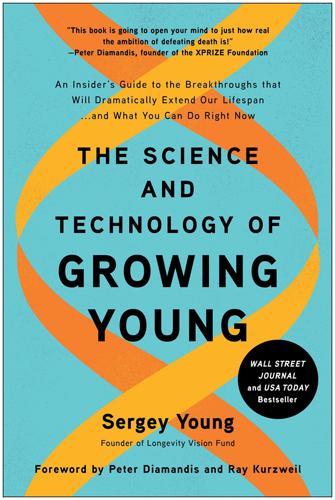
The Science and Technology of Growing Young: An Insider's Guide to the Breakthroughs That Will Dramatically Extend Our Lifespan . . . And What You Can Do Right Now
by
Sergey Young
Published 23 Aug 2021
In addition to years of unique access to the offices and labs of some of the smartest scientists, technologists, doctors, investors, and entrepreneurs on Earth, my team and I have reviewed many hundreds, if not thousands, of academic papers, news articles, books, and presentations in pursuit of the work you now hold in your hands. I have personally spent time with and interviewed more than fifty of the leading longevity pioneers of our time. I am talking about super-stars like Harvard professor Dr. David Sinclair; acclaimed longevity pioneer Dr. Aubrey de Grey; genius geneticists like George Church, PhD, who helped develop the first direct genomic sequencing method; Dr. Cynthia Kenyon, one of the world’s foremost authorities on the molecular biology and genetics of aging and vice president of Google-backed Calico Labs; and Dr. Steve Horvath, who developed the first epigenetic clock—a method of measuring age biologically, rather than merely by your birthdate.
…
In the Near Horizon of Longevity, however, we will go beyond understanding genes: we will soon develop the godlike power to alter them. CHAPTER 7 ENGINEERING OUR GENETIC CODE How Human Genome Sequencing Is Paving the Way for Radical New Technological Advances in Health Care and Longevity “Every disease that’s with us is caused by DNA. And every disease can be fixed by DNA.” —Dr. George Church, Geneticist “Just because we are not ready for scientific progress does not mean it won’t happen.” —Dr. Jennifer Doudna, Biochemist and CRISPR Pioneer “The total human sequence is the grail of human genetics.” —Dr. Walter Gilbert, Biochemist Victoria Gray was just three months old the first time she endured a sickle-cell attack.
…
In 2012, Doudna and Charpentier released a revolutionary paper in Science magazine announcing to the world that Cas9 could be “programmed” to cut any sequence of DNA desired. The scientific community immediately recognized the revolutionary possibilities of this technology: in 2013, a young Chinese American biochemist by the name of Feng Zhang managed to adapt CRISPR for mouse and human cells in a petri dish. Genomic luminary and Harvard professor George Church, whose contributions to the field are too numerous to recount here, used CRISPR-Cas9 to edit human stem cells. Soon, scientists were deleting, adding, and changing human genes as if they were merely notes on lines of sheet music! Some of these projects seem frivolous on the surface—glow-in-the-dark rabbits, frogs, dogs, and pigs, for example.
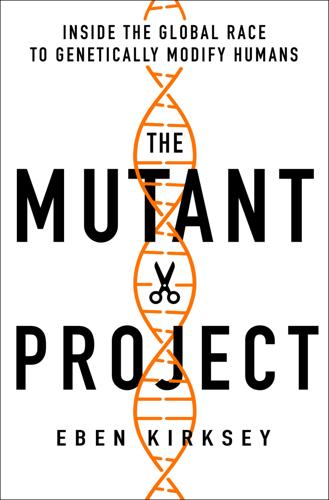
The Mutant Project: Inside the Global Race to Genetically Modify Humans
by
Eben Kirksey
Published 10 Nov 2020
The company had ambitions of remaking life itself with Shenzhen speed. George Church gave a keynote lecture with a broad overview of initiatives that were already under way. “Genome engineering enables some new capabilities to create resistance to pathogens,” Church said as he demonstrated how to alter human gene sequences and block the entry of viruses into cells. “We want to apply this to all industrial microorganisms, agricultural plants and animals, and develop human applications,” he added. On Harvard University’s official website, George Church has listed genetic targets for human enhancement experiments.
…
Yang announced a bold vision: “Within ten years we aim to sequence the DNA of every important plant species, within twenty years we want to sequence every human on the planet, within thirty years we aim to sequence every form of life.” Yang paraded around the stage, giddy with enthusiasm, saying that he had a surprise in store for the audience. “My girls and boys always have new ideas,” he said. In the next breath he shouted: “George, come on!” A legendary molecular biologist from Harvard, George Church—a towering Cro-Magnon of a man—was summoned to the stage. Church has long aspired to bring woolly mammoths back from the dead. The project was on a back burner in the United States, with technical progress on other projects bringing Church incremental advances. Not so here. In flattering the Harvard biologist, Yang conveyed a strong message: China has the resources and the technical skills to make Church’s vision a reality.
…
The company was already operating facilities to process samples in Europe, the United States, Africa, and Asia.1 With the China National GeneBank, a landmark partnership with the Chinese government, BGI was taking their genetic work to the next level. Yang’s headline surprise for the opening ceremony was the George Church Institute for Regenesis: a bold project to reanimate extinct species. Other startling projects were already in motion. For example, BGI researchers had engineered super-small pigs and were starting to target genes for athletic performance and high-altitude adaptation that could be optimized in humans.
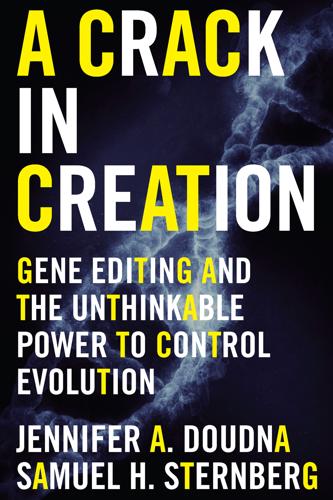
A Crack in Creation: Gene Editing and the Unthinkable Power to Control Evolution
by
Jennifer A. Doudna
and
Samuel H. Sternberg
Published 15 Mar 2017
It was for this reason that some colleagues and I were considering founding a company to develop CRISPR-based therapies—this was the purpose of my visit to Cambridge, in fact. Our dream was to leverage CRISPR to treat genetic diseases in a way that had scarcely been feasible before. In a marathon of meetings in the summer and fall of 2013, the team of this hypothetical company evolved to include me and four other scientists: George Church, Keith Joung, David Liu, and Feng Zhang. In November 2013, we founded Editas Medicine with $43 million in financing from three venture capital firms. Just a half a year later, Emmanuelle co-founded another company, CRISPR Therapeutics, with an initial $25 million bankroll, and in November 2014, a third company, Intellia Therapeutics, joined the scene with $15 million in Series A funding.
…
Much to my delight, the first few weeks of 2013 were marked by the publication of a whopping five articles on CRISPR besides our own, all describing similar kinds of experiments in which the system had been used to edit genes in cells, just as we had proposed in 2012. Both MIT professor Feng Zhang and Harvard professor George Church had contacted me to alert me to their forthcoming publications. The Zhang and Church articles in the journal Science appeared online in early January, followed later that month by my article with Martin and three other articles from the labs of Professor Jin-Soo Kim of Seoul National University, Rockefeller University professor Luciano Marraffini, and Harvard Medical School professor Keith Joung.
…
Sadly (or luckily, depending on how you feel about dinosaurs), the chemical bonds in DNA are far too unstable to remain intact for sixty-five million years. But author Michael Crichton wasn’t far off the mark with this idea. A similar strategy is being pursued for woolly mammoths by a team of Harvard researchers led by George Church. A key starting point is the high-quality, fully sequenced genome that was obtained from two woolly mammoth specimens that died some twenty to sixty thousand years ago; the genomes have allowed scientists to exhaustively analyze the precise DNA changes between the mammoth and the modern-day elephant, its closest relative.
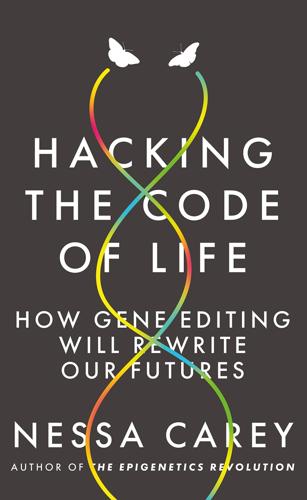
Hacking the Code of Life: How Gene Editing Will Rewrite Our Futures
by
Nessa Carey
Published 7 Mar 2019
One observer compared him to a character from Greek tragedy, commenting that: ‘The only person that could hurt him was himself. He was invulnerable to anybody else’s sword.’ This statement was made by Professor George Church, another gene editing pioneer and a colleague of Lander at the Broad.7 Disquiet about Lander’s article was widespread. It has generally been perceived as an attempt to play down the role of Doudna and Charpentier, and to put Feng Zhang centre-stage in the development of the technology. As George Church commented: ‘Normally I’m not so nitpicky about all these errors. But as soon as I saw that they [Lander and Cell] were not giving the young people, the people who actually did the work, and Jennifer and Emmanuelle, adequate credit, I just said, “No, I have to correct what I know to be false.”’8 Lander spends a lot of time on the work of Virginijus Šikšnys from the University of Vilnius, who was working on the same types of approaches as Doudna and Charpentier.
…
That level of mortality probably wouldn’t occur in response to the scenario outlined above for pig transplants, but there is certainly a risk to immunosuppressed people in contact with the infected recipients. This includes the very young, the elderly, and the sick. The sick are rather common in hospitals, where we would expect our transplant recipients to be quite regular visitors. George Church is a Professor at Harvard Medical School. He’s published about 500 papers in his lifetime and has adopted the new gene editing techniques with all the zeal of the 19th-century explorer/missionary his beard so makes him resemble. He has been instrumental in pushing the limits of what the techniques can achieve and his work on the viruses in pig genomes is a great exemplar of this.
…
Church and his team used gene editing to inactivate every single one of these simultaneously. This would have been virtually impossible and a logistical nightmare with older forms of genetic modification. Transmission of the viruses from pig cells to human cells dropped one thousand-fold.18 Two years later, George Church was one of the leaders of the team that took the next jump forwards. Their original research had been conducted in the laboratory, and only in cell culture. In 2017, they combined gene editing with animal cloning approaches and created edited pigs that could not reactivate the viral hijackers in their genomes.19 Church has been quoted as saying that we could see pig-to-human transplants by the end of 2019.20 This seems extraordinarily optimistic, at least in the west where it’s unlikely you could even gain ethical approval that fast for such a radical procedure.
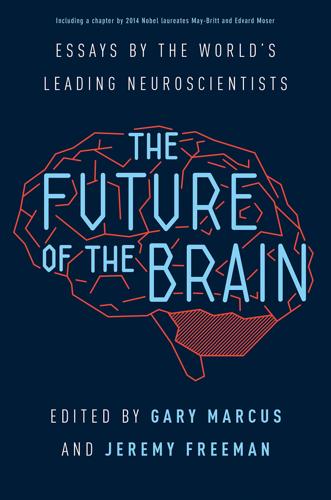
The Future of the Brain: Essays by the World's Leading Neuroscientists
by
Gary Marcus
and
Jeremy Freeman
Published 1 Nov 2014
. ∞ Printed in the United States of America 10 9 8 7 6 5 4 3 2 1 CONTENTS LIST OF CONTRIBUTORS ix PREFACE Gary Marcus and Jeremy Freeman xi MAPPING THE BRAIN Building Atlases of the Brain 3 Mike Hawrylycz with Chinh Dang, Christof Koch, and Hongkui Zeng Whole Brain Neuroimaging and Virtual Reality 17 Misha B. Ahrens Project MindScope 25 Christof Koch with Clay Reid, Hongkui Zeng, Stefan Mihalas, Mike Hawrylycz, John Philips, Chinh Dang, and Allan Jones The Connectome as a DNA Sequencing Problem 40 Anthony Zador Rosetta Brain 50 George Church with Adam Marblestone and Reza Kalhor COMPUTATION Understanding the Cortex through Grid Cells 67 May-Britt Moser and Edvard I. Moser Recording from Many Neurons Simultaneously: From Measurement to Meaning 78 Krishna V. Shenoy Network Neuroscience 90 Olaf Sporns Large-Scale Neuroscience: From Analytics to Insight 100 Jeremy Freeman SIMULATING THE BRAIN Whole Brain Simulation 111 Sean Hill Building a Behaving Brain 125 Chris Eliasmith LANGUAGE The Neurobiology of Language 139 David Poeppel Translating the Genome in Human Neuroscience 149 Simon E.
…
Rabaey, and Elad Alon AFTERWORD Neuroscience in 2064: A Look at the Last Century 255 Christof Koch and Gary Marcus GLOSSARY 271 INDEX 275 CONTRIBUTORS Misha B. Ahrens HHMI, Janelia Farm Research Campus, Ashburn, Virginia Ned Block New York University Arthur Caplan New York University, Langone Medical Center Matteo Carandini University College London George Church Harvard Medical School John Donoghue Brown Institute for Brain Science, Brown University Chris Eliasmith University of Waterloo, Ontario, Canada Simon E. Fisher Max Planck Institute for Psycholinguistics and Donders Institute for Brain, Cognition & Behaviour, Radboud University, Nijmegen, the Netherlands Jeremy Freeman HHMI, Janelia Farm Research Campus, Ashburn, Virginia Mike Hawrylycz Allen Institute for Brain Science, Seattle, Washington Sean Hill Brain Mind Institute, École Polytechnique Fédérale de Lausanne, Switzerland Christof Koch Allen Institute for Brain Science, Seattle, Washington Leah Krubitzer University of California, Davis Michel M.
…
Our hope is that computation can provide a universal language for describing the action of the brain, especially as theorists and experimentalists come closer together in their quest. Given the complexity of the brain, there is no certainty we will come to fully or even largely understand the brain’s dynamics anytime soon; in truth, there is reason for hope, but no guarantees. This book, with chapters by pioneers like Christof Koch and George Church, represents our best guesses—and our esteemed contributors’ best guesses—about where we are going, what we are likely to find out, and how we might get there. But it also admits where we might stumble along the way. If this book is a reader’s guide to the future, it’s not a foolproof crystal ball; if anything, it’s more like a time capsule.
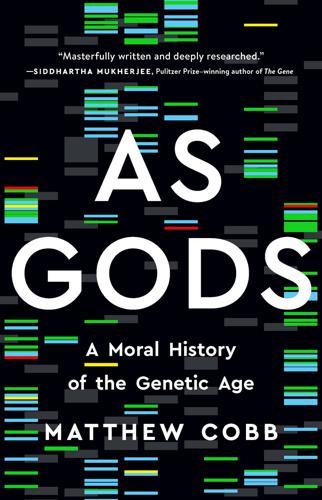
As Gods: A Moral History of the Genetic Age
by
Matthew Cobb
Published 15 Nov 2022
This was the focus of the second CRISPR race of 2012 and was briskly resolved in a matter of months as two groups from Harvard published back-to-back articles on the Science website at the beginning of January 2013.38 Feng Zhang, a young researcher from the Broad (rhymes with ‘road’) Institute had become interested in CRISPR in 2011 (somewhat alarmingly, Zhang was inspired to work in genetic engineering after watching Jurassic Park as a teenager39). With his colleagues, Zhang showed that CRISPR could work in human and mouse cells. He did this by slightly altering the structure of the guide RNA molecule, substantially improving its activity. The other paper was published by George Church’s group, which had a long-standing interest in genetic engineering (Church had been Wally Gilbert’s PhD student in the 1970s).40 By the end of January 2013 Doudna’s group had published its own, slightly less effective version of CRISPR editing in mammalian cells, as had the Korean group of Jin-Soo Kim.41 Doudna later recalled the ease with which the final step was taken as she worked with Martin Jinek: In just a few simple and routine steps, Martin and I had selected an arbitrary DNA sequence within the 3.2-billion-letter human genome, designed a version of CRISPR to edit it, and watched as the tiny molecular machinery followed through with its new programming – all inside living human cells.42 Within a decade CRISPR had been transformed from a strange piece of bacterial genomics to an astonishingly powerful and flexible system for editing genes in any organism.
…
Other proposals included an international governance framework and a global citizen’s assembly, set up as much to inform the public as to involve them.29 This latter suggestion, published in Science in September 2020 by a group of twenty-five researchers, led by John Dryzek of the University of Canberra and including George Church, had the virtue of recognising that experts in science and ethics are not the only people who need to be involved: Though we might expect scientists to be good at reflecting on scientific values, their role gives them no specific insight on the public interest. Ethicists are professionally capable when it comes to moral principles – but these are not necessarily the same as public values.30 Despite all this imagination and effort, little concrete progress was made before the world was blown off-course by the COVID-19 pandemic.
…
The avowed aims of gene-drive researchers are precise, localised in time and space, and laudably humanitarian. But, as the saying goes, the road to Hell is paved with good intentions. With the advent of CRISPR in 2013, scientists could now see how to create gene drives in pest organisms. In summer 2014, Kevin Esvelt and some of his Harvard colleagues, including George Church, published a theoretical article on gene drives in which they let their imaginations run free. RNA-guided gene drives, they claimed, ‘would represent an entirely new approach to ecological engineering with many potential applications relevant to human health, agriculture, biodiversity, and ecological science’.21 The team described the complex molecular biology involved in creating such drives and outlined different types of system that would hypothetically either suppress or alter a population, including drives that would make a species sensitive to a particular molecule or restore susceptibility in a population that had become resistant to a particular pesticide.22 They even saw the potential to use gene drives to aid conservation, for example, by targeting invasive species that cause untold damage to ecosystems across the planet.

Whiplash: How to Survive Our Faster Future
by
Joi Ito
and
Jeff Howe
Published 6 Dec 2016
Reengineered E. coli could poop out enough jet fuel to power an airliner across the Atlantic.16 Imagine giant collecting ponds of the bacteria capable of satisfying the global thirst for fossil fuel. Maybe you’ll want an exotic pet? Try one of the boutique, pint-sized elephants on offer at the local GeneFab, or program your own. “You can’t predict the future of a scientific field,” says George Church, a geneticist at Harvard and MIT. Church is often criticized for hyping the field of synthetic biology—he has promoted the idea of “de-extincting” the Neanderthal and the woolly mammoth17—but in person he seems less a provocateur than a realist. Asked whether some of the more outlandish ideas around synthetic biology were far-fetched, he shrugged and pointed out that no one could have predicted the emergence of an easy, high-speed technology that would allow us to map the human genome.
…
The goal of all of this is to give scientists the building blocks they need to experiment and to play, much like we give a kid blocks and watch him or her build a house or a dinosaur or a banana. Yet the lack of standards—the fact that every researcher who had begun to dabble in synthetic biology was, in a sense, using a screw of a different thread—was slowing the growth of the nascent discipline. “A field only progresses when it has a community surrounding it,” notes George Church, the Harvard molecular biologist. Unable to coax more than a handful of university scientists to explore this intersection of biology and engineering, Knight, Endy, and Randy Rettberg, who went on to found iGEM, recruited a different cohort: undergraduates. MIT’s winter semester begins in February, and the university has a long tradition of allowing faculty, students, or even unaffiliated outsiders to host courses on diverse, even playful curricula in January, as part of the Independent Activities Period (IAP).20 So in January 2003, Knight and his colleagues hosted a course in synthetic biology.
…
The only true consensus they’ve reached since Joi got to the Lab—and it happened at a faculty meeting in his first year as director—was an agreement that the Lab is about “Uniqueness, Impact, and Magic.” Uniqueness: The Lab works on things no one else is working on, and if someone else is working on it, we move on. As George Church says, if you’re competing, it’s not interesting. Impact: Many who work in the pure sciences are trying to discover knowledge “for science.” While this is important, the Media Lab works in the service of impact, a concept that has evolved over the years. Nicholas Negroponte allegedly coined the phrase “Demo or Die.”27 It’s a reference to the Lab as build-oriented and impact-oriented.
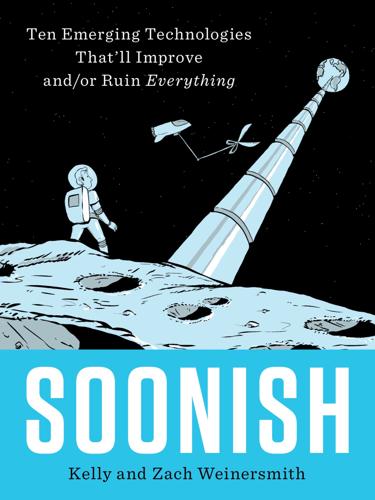
Soonish: Ten Emerging Technologies That'll Improve And/or Ruin Everything
by
Kelly Weinersmith
and
Zach Weinersmith
Published 16 Oct 2017
The gene “drives” its way through the entire population. This is true even if vibrant orange nose hair (inexplicably) makes you less sexy. You might have fewer kids, you ginger-nosed freak, but all of them will have the selfish gene. So gene drives mean that you can impose synthetic biology on an entire wild population. Dr. George Church of Harvard and others were able to put multiple gene drives for malaria resistance into mosquitoes. That way, instead of having to release modified mosquitoes every season, you could potentially have a one-time release of mosquitoes with multiple malaria-resistance gene drives. Even if malaria resistance makes them less attractive mates, the gene should spread through the population, growing exponentially as it goes.
…
And here’s the cute part: In a healthy cell, when its DNA gets snipped, it attempts to repair itself by joining the two ends back together. Before the repair happens, you can slip in new molecules that fit in the gap. The DNA heals itself up, and BAM! You’ve just selectively introduced new code into a cell’s DNA at a spot of your choosing. And you did it into a living cell. The lab groups of Dr. Feng Zhang at MIT and Dr. George Church worked out methods to use CRISPR-Cas9 on mice and humans. So, as of 2013 or so, you can run around in cells from all sorts of organisms, snipping DNA out and sticking DNA in willy-nilly. What shall we do? Play God? Besiege the ancient vale of Nature with the iron cannons of Science?! Don’t mind if we do!
…
Remember, we don’t yet know what we’re doing here. Even if a designer human were successfully created, we don’t know how its genes would affect future generations. How It Would Change the World It’s the most amazing time. You no longer have the burden of really tedious experiments; you’re just limited by imagination. • Dr. George Church Synthetic biologists want to make their knowledge open and easily accessible. In less than a single lifetime, we’ve gone from wondering about the structure of DNA to reprogramming it with its own machinery. In the more distant future, this could have some wild ramifications. Like, storing memory in DNA.
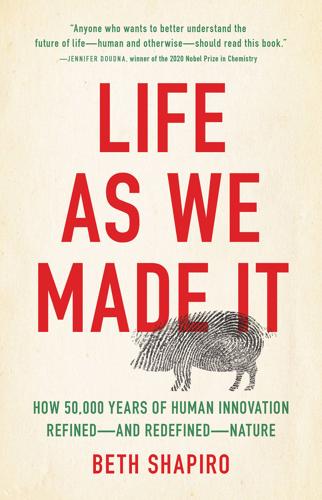
Life as We Made It: How 50,000 Years of Human Innovation Refined--And Redefined--Nature
by
Beth Shapiro
Published 15 Dec 2021
Despite that Yuka’s cells were in extremely good shape compared to cells from other mummified mammoths, the mouse proteins were unable to make much headway repairing the cell’s DNA. Mammoths cannot be cloned because mammoth cells are all dead. The third team hoping to resurrect mammoths, led by George Church from the Wyss Institute of Harvard University, accepts that living mammoth cells will not be found, given that the last mammoths died more than 3,000 years ago. But Church does not accept that this precludes reviving mammoths. He points to the ready existence of a limitless supply of living nearly mammoth cells—cells from Asian elephants—that can be grown in the lab and transformed from nearly mammoth to entirely mammoth using the tools of synthetic biology.
…
While scientists may someday recode the elephant genome into a mammoth genome and clone that cell using an elephant mom, the developmental process itself could also be a technical barrier to resurrecting a mammoth. A cloned mammoth born to an elephant mom (or from an artificial womb, which is George Church’s preferred solution to the problem of cloning elephants) would probably look like a mammoth. Everyone knows identical twins, and so we can all appreciate how influential DNA is in determining appearance. But our twin friends are not interchangeable. Their different experiences, stresses, diets, and environments shape two entirely different people.
…
They produce 100 kilograms (220 lb) of manure every day and transform the landscape by razing shrubs and (as the glue stick toppler suggested) knocking down trees as their herds pass through. Mammoths, the Zimovs anticipate, were similar ecosystem engineers. Because this role is currently unfilled in Pleistocene Park, the younger Zimov drives around in an old Soviet army tank, flattening the snow and toppling small trees. The Zimovs are hopeful that George Church’s team will one day succeed, and that Pleistocene Park will be home to herds of wild mammoths doing their part to keep greenhouse gases trapped in the frozen soil. While I can’t confirm that mammoths would slow permafrost thaw, the Zimovs’ rationale for mammoth de-extinction—to create a sustainable and diverse population of wild animals to fill a missing ecological role and thereby preserve an ecosystem—is to me the most compelling of reasons to bring back mammoths.
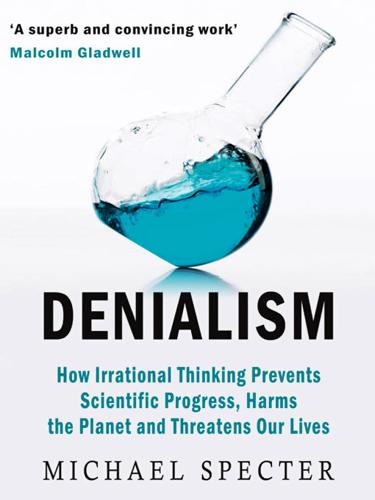
Denialism: How Irrational Thinking Hinders Scientific Progress, Harms the Planet, and Threatens Our Lives
by
Michael Specter
Published 14 Apr 2009
The final bill is hard to calculate, because the figures include the cost of many scientific activities relating to genomics carried out during the thirteen-year-long project. But the total was far less than the original estimate, and when the project ended in 2001, the team said that they could do it again for $50 million. Five years later, the molecular geneticist George Church said he could sequence a genome for about $2 million. The following year, it took two months and less than $1 million to sequence the complete genome of James Watson, who in 1953 discovered the structure of DNA along with Francis Crick. A drop in cost from $3 billion to $100,000 in twenty years is impressive.
…
If we knew who those three people were likely to be, however, none of that would matter. Obviously, that kind of knowledge would have saved thousands of lives lost to Vioxx. And it would have permitted millions who were not at risk of heart attack or stroke to continue to take a drug that had helped them immensely. “We are just starting all this,” George Church said. In addition to his academic and entrepreneurial commitments, Church advises several genomics companies, including 23andme. “But there is already great value to these tests. If you happen to have a SNP that leads to a disease that changing behavior will help, then it’s magnificent. So if you have a propensity to diabetes, you’re going to want to exercise, don’t eat certain things, etcetera.
…
Between 1977, when Frederick Sanger published the first paper on automatic gene sequencing, and 1995, when Craig Venter published the first bacterial genome sequence, the field moved slowly. It took the next six years to complete the first draft of the immeasurably more complex human genome, and six years after that, in 2007, scientists on three continents began mapping the full genomes of one thousand people. George Church’s Personal Genome Project now plans to sequence one hundred thousand. (Church is convinced that, in exchange for advertising, companies will soon make genomes available to anyone for free—a model that has certainly worked for Google.) His lab has been able to sequence billions of DNA base pairs in the time it would have taken Sanger to sequence one.
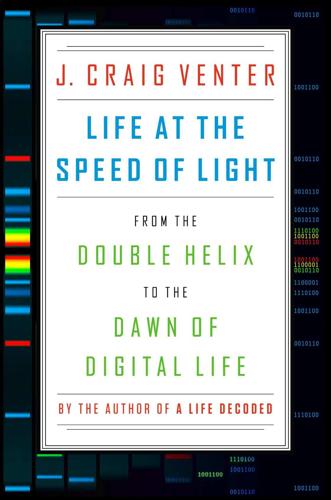
Life at the Speed of Light: From the Double Helix to the Dawn of Digital Life
by
J. Craig Venter
Published 16 Oct 2013
Recent achievements are too numerous to list in detail, but here are a few examples of genetic-engineering advances. The workhorse of molecular-biology labs, E. coli, was partly minimized (with 15 percent of its DNA removed) by Frederick Blattner, at the University of Wisconsin, in 20023 in an attempt to make it a more reliable chassis for industrial production. At Harvard, George Church’s lab developed a method called MAGE—multiplex automated genome engineering—to replace a codon in thirty-two strains of E. coli, then planned to coax those partially edited strains along an evolutionary path toward a single-cell line in which most instances of the codon had been replaced.4 In Christopher Voigt’s laboratory, at MIT, a sophisticated genetic circuit has been assembled that, if installed in a bacterium, could, for example, enable it to sense four different cancer indicators and, in the presence of all four, release a tumor-killing factor.5 His colleague, Timothy Lu, has developed DNA modules that can perform logic operations, so that programmable cells with decision-making capabilities could be customized for multiple applications.6 Inevitably, as technology advances, the goals become more ambitious, allowing new questions to be approached that in turn result in further technological development.
…
In 2004, for just one example, our policy team, headed by Robert Friedman, along with the Center for Strategic and International Studies (CSIS) and MIT, was funded by the Alfred P. Sloan Foundation to conduct workshops and a public session over a twenty-month period to discuss the ethical and societal implications of synthetic genomics. We (I was among the core members, which included George Church, Drew Endy, Tom Knight, and Ham Smith) published our findings in October of 2007 as Synthetic Genomics: Options for Governance.29 All the while I give public lectures, as do members of my team; present detailed papers to academic conferences; and deal with constant questions from the global media.
…
See www.umass.edu/legal/derrico/amherst/lord_jeff.html. 18. http://www.who.int/csr/disease/smallpox/en/index.html. 19. Mildred K. Cho, David Magnus, Arthur L. Caplan, Daniel McGee, and the Ethics of Genomics Group. “Ethical considerations in synthesizing a minimal genome.” Science 286, no. 5447 (December 10, 1999): pp. 2087–90. 20. George Church and Ed Regis. Regenesis: How Synthetic Biology Will Reinvent Nature and Ourselves (New York: Basic Books, 2012), p. 9. 21. Cho, et. al, “Ethical Considerations in Synthesizing a Minimal Genome.” 22. Kenneth I. Berns, Arturo Casadevall, Murray L. Cohen, Susan A. Ehrlich, Lynn W. Enquist, J.

Immortality, Inc.
by
Chip Walter
Published 7 Jan 2020
That’s why he couldn’t fathom how people could make these wild prognostications about eliminating death when so little was really known about how to do it. Later—though Levinson would never say so outright—these views had to include the thinking of Ray Kurzweil and Aubrey de Grey—and, in December 2015, Harvard genetics professor George Church, who announced at an international summit in Washington, D.C., that he was confident he could reverse aging inside of five or six years. Now George Church was not some second-rate, white lab coat bumpkin. He was co-founder of Harvard’s vaunted Wyss Institute, a member of the National Academy of Sciences, and a key player (along with several others) in the development of the gene-editing system Crispr (Clustered Regularly Interspaced Short Palindromic Repeats).
…
Aberlin, Mary Beth. “Age-Old Questions: How Do We Age, and Can We Slow It Down?” The Scientist, March 1, 2015. Achenbach, Joel. “Harvard Professor Says He Can Cure Aging, But Is That a Good Idea.” Washington Post (Achenblog), December 2, 2015. washingtonpost.com/news/achenblog/wp/2015/12/02/professor-george-church-says-he-can-reverse-the-aging-process. Asian Scientist Newsroom. “Removing Old Cells Could Prevent Arthritis.” Asian Scientist, June 14, 2017. Baer, Drake. “5 Amazing Predictions by Futurist Ray Kurzweil That Came True—and 4 That Haven’t.” Business Insider, October 20, 2015. www.businessinsider.com.au/15-startling-incredible-and-provactive-predictions-from-googles-genius-futurist-2015-9.

Whole Earth Discipline: An Ecopragmatist Manifesto
by
Stewart Brand
Published 15 Mar 2009
Synthetic Biology includes the broad redefinition and expansion of biotechnology, with the ultimate goals of being able to design and build engineered biological systems that process information, manipulate chemicals, fabricate materials and structures, produce energy, provide food, and maintain and enhance human health and our environment. The idea is to “play Nature,” to reverse-engineer the tangled genetic code of eons and “refactor” it—write fresh genetic code that is manageable, that actually does have intelligent design instead of the infinity of moronic kludges and patches that timeless evolution confers. George Church, a leading molecular geneticist at Harvard, says that biology is at last becoming “an engineering discipline, with interchangeable parts, hierarchical design, interoperable systems, specification sheets—stuff that only an engineer could love.” Rob Carlson reports that the minimalist approach to genome design is paying off: “Most synthetic DNA constructs are usually composed of just a few genes, with cutting edge designs topping out at about 15 genes.
…
“Every day,” notes Roger Brent of the Molecular Sciences Institute, “in thousands of labs worldwide, genes, mRNAs and proteins, isolated from cells or organisms, are conveyed as bits (via the Internet) or as self-replicating molecules (via Federal Express), and reintroduced into other cells or used to engineer new organisms.” Brent is one of the major proponents in the United States of open-source biotech, along with Rob Carlson, Drew Endy, George Church, and Craig Venter. All of them are acutely aware of the dangers of bioterror and have worked directly with the government agencies responsible for biosecurity. They promote transparency and widely available biotech skills as the safest as well as the most pragmatic way to deal with potential dangers, much as the spreading of computer programming skills has helped keep the Internet healthy despite countless attacks with computer viruses, worms, and other malevolence.
…
This is not alarmist.” (James Watson’s 1977 comment about cellulase in the previous chapter should lay to rest the ever-recurrent “green goo” hypothesis. If green goo could thrive in the world, microbes would have invented it long ago. If we try to create green goo, microbes will defeat it.) Synthetic biologist George Church has yet another vision: “The most sustainable source of energy is sunlight and the most convenient products are pipeline-compatible petrochemicals. So I would aim for a perennial plant system that secreted pure chemicals—octane, diesel, monomer for plastics, etc.—into pipes without need for further purification.”

The Future Is Faster Than You Think: How Converging Technologies Are Transforming Business, Industries, and Our Lives
by
Peter H. Diamandis
and
Steven Kotler
Published 28 Jan 2020
See: https://annals.org/aim/fullarticle/2633848/impact-whole-genome-sequencing-primary-care-outcomes-healthy-adult-patients. All of Us project: Details of the All of Us project and funding can be found on the NIH website here: https://allofus.nih.gov/. Harvard geneticist George Church recently founded Nebula Genomics: “Q&A: George Church and Company on Genomic Sequencing, Blockchain, and Better Drugs,” Science, February 8, 2018. See: https://www.sciencemag.org/news/2018/02/q-george-church-and-company-genomic-sequencing-blockchain-and-better-drugs. For more information on Nebula Genomics, see their website here: https://nebula.org/. genetically engineered cocaine resistance into mice: Yuanyuan Li, “Genome-Edited Skin Epidermal Stem Cells Protect Mice from Cocaine-Seeking Behaviour and Cocaine Overdose,” Nature Biomedical Engineering 3 (2019): 105–113.
…
The larger and more complete our genetic data sets, the more robust the preventative power of genomics will become. This is also why, in 2018, the National Institutes of Health launched their All of Us project, distributing nearly $27 million in grants to sequence a million genomes, and Harvard geneticist George Church recently founded Nebula Genomics to do something similar. Church is also involved in the Genome Project-Write, which is the farther future—an attempt to write a human genome from scratch. If successful, GP-Write, as it is known, will help us grow transplantable organs, give us new weapons in the war on viruses and cancer, and provide cheap medicines and vaccines.

As the Future Catches You: How Genomics & Other Forces Are Changing Your Work, Health & Wealth
by
Juan Enriquez
Published 15 Feb 2001
But if you go into the bowels of Harvard Medical School … And are able to find the genetics department inside the Warren Alpert Building … (A significant test of intelligence in and of itself … Start by finding the staircase inspired by the double helix … and go past the bathrooms marked XX and XY …) There you can find a small den where George Church hangs out, surrounded by computers. He seems like a large teddy bear … Often hiding his extraordinary brain behind a quiet grin, a beard, and a self-effacing manner. This is ground zero for a wonderful commune of engineers, physicists, molecular biologists, and physicians …3 And some of the world’s smartest graduate students … Who are trying to make sense of the 100 terabytes of data that come out of gene labs yearly … A task equivalent to trying to sort and use a million new encyclopedias … every year.4 You can’t build enough “wet” labs (labs full of beakers, cells, chemicals, refrigerators) to process and investigate all the opportunities this scale of data generates.
…
Debra Spar always had a smile and encouragement as well as a sharp sense of how to improve arguments. And Jonathan West helped me conceive and launch the life-science project. Joan Bok and Al Houston asked me to join the genetics advisory council of Harvard Medical School, which provided an extraordinary opportunity to learn from professors like Phil Leder, Connie Cepko, George Church, and Hidde Ploegh. Robin Blatt was kind to ask me to become a contributing editor of The Journal of Biolaw and Business. Throughout Mexico and Latin America, many people taught me how to do things right and how to screw up a country. I thank both groups for valuable lessons. But I’ll mention only those who taught me that Mexico is and will remain a great country.

Possible Minds: Twenty-Five Ways of Looking at AI
by
John Brockman
Published 19 Feb 2019
The gap between today’s systems and the science-fictional systems dominating the popular imagination is still huge, though many folks, both lay and expert, manage to underestimate it. Let’s consider IBM’s Watson, which can stand as a worthy landmark for our imaginations for the time being. It is the result of a very large-scale R&D process extending over many person-centuries of intelligent design, and as George Church notes in these pages, it uses thousands of times more energy than a human brain (a technological limitation that, as he also notes, may be temporary). Its victory in Jeopardy! was a genuine triumph, made possible by the formulaic restrictions of the Jeopardy! rules, but in order for it to compete, even these rules had to be revised (one of those trade-offs: you give up a little versatility, a little humanity, and get a crowd-pleasing show).
…
While on a book tour in London, he was in the midst of planning for FLI, and he admits to being driven to tears in a tube station after a trip to the London Science Museum, with its exhibitions spanning the gamut of humanity’s technological achievements. Was all that impressive progress in vain? FLI’s scientific advisory board includes Elon Musk, Frank Wilczek, George Church, Stuart Russell, and the Oxford philosopher Nick Bostrom, who dreamed up an oft-quoted Gedankenexperiment that results in a world full of paper clips and nothing else, produced by an (apparently) well-meaning AGI who was just following orders. The institute sponsors conferences (Puerto Rico 2015, Asilomar 2017) on AI safety issues and in 2018 instituted a grants competition focusing on research in aid of maximizing the societal benefits of AGI.
…
Church is Robert Winthrop Professor of Genetics at Harvard Medical School, Professor of Health Sciences and Technology at Harvard-MIT, and co-author (with Ed Regis) of Regenesis: How Synthetic Biology Will Reinvent Nature and Ourselves. In the past decade, genetic engineering has caught up with computer science with regard to how new scientific initiatives are shaping our lives. Genetic engineer George Church, a pioneer of the revolution in reading and writing biology, is central to this new landscape of ideas. He thinks of the body as an operating system, with engineers taking the place of traditional biologists in retooling stripped-down components of organisms (from atoms to organs) in much the same vein as in the late 1970s, when electrical engineers were working their way to the first personal computer by assembling circuit boards, hard drives, monitors, etc.

Lifespan: Why We Age—and Why We Don't Have To
by
David A. Sinclair
and
Matthew D. Laplante
Published 9 Sep 2019
Now, as we rapidly approach the era of self-driving cars—a technological and social paradigm shift that almost every expert expects will rapidly reduce car crashes—we need to confront an important question: Where will the organs come from? The geneticist Luhan Yang and her former mentor Professor George Church in my department at Harvard Medical School had just discovered how to gene edit mammalian cells when they began working to edit out genes in pigs. To what end? They envisioned a world in which pig farmers raise animals specifically designed to produce organs for the millions of people who are on transplant waiting lists.
…
As with most other breakthroughs, there were dozens of brilliant people involved in the lead-up to it,37 but Emmanuelle Charpentier, then at the Laboratory for Molecular Infection Medicine in Sweden, and Jennifer Doudna at UC Berkeley have garnered the most fame for their remarkable discovery that the bacterial Cas9 protein is a DNA-cutting enzyme with an RNA-based “GPS” or “guide.”38 The next year, Feng Zhang at MIT and George Church at Harvard proved that the system could be used to edit human cells. They, too, garnered fame—and some very valuable patents.39 News of the discovery spread quickly down the hall to my lab. It seemed too good to be true—except it was. The technology is colloquially known as CRISPR, for “clustered regularly interspaced short palindromic repeats,” which are the natural DNA targets of Cas9 cutting in bacteria.
…
That’s the same place where Connie Cepko is working to grow mammalian eyes in a dish and studying the potential for gene therapy to restore lost vision. Down the hall in his clean room, David Reich, the author and scientist, is sequencing DNA from 20,000-year-old teeth and discovering that our ancestors liked to breed with other human subspecies. And a floor down, George Church is working on, among other wizardries, printing an entire human genome and reviving the woolly mammoth. Across the street, Jack Szostak has moved on from his Nobel Prize–winning work to uncover secrets about how life began four billion years ago; he comes by sometimes to visit. Yeah, the elevator conversations are awesome.

Turing's Cathedral
by
George Dyson
Published 6 Mar 2012
We have already outsourced much of our cultural inheritance to the Internet, and are outsourcing our genetic inheritance as well. “The survival of the fittest is a slow method for measuring advantages,” Turing argued in 1950. “The experimenter, by the exercise of intelligence, should be able to speed it up.”51 The entrepreneurial genomicist George Church recently announced, concerning biotechnology’s success in the laboratory, “We are able to program these cells as if they were an extension of the computer.”52 To which life, with three billion years of success in the wild, might answer, “We are able to program these computers as if they were an extension of the cell.”
…
Moorhead and Martin M. Kaplan, eds., Mathematical Challenges to the Neo-Darwinian Interpretation of Evolution: A Symposium Held at the Wistar Institute, April 25–26, 1966 (Philadelphia: Wistar Institute, 1966), p. 67; Alan Turing, “Computing Machinery and Intelligence,” Mind 59, no. 236 (October 1950): 456. 52. George Church, West Hollywood, Calif., July 26, 2009, EDGE Foundation, “A Short Course on Synthetic Genomics” (http://edge.org/event/master-classes/the-edge-master-class-2008-a-short-course-on-synthetic-genomics). THIRTEEN: TURING’S CATHEDRAL 1. Sara Turing, Alan M. Turing (Cambridge, UK: W. Heffer and Sons, 1959), p. 11. 2.
…
Burks, Arthur W. (1915–2008), 5.1, 6.1, 6.2, 7.1, 7.2, 7.3, 8.1, 8.2, 8.3, 11.1, 12.1, 15.1, 18.1 and ENIAC on von Neumann, Gödel, and Turing Bush, Vannevar (1890–1974), 5.1, 7.1, 11.1, 11.2 Byllynge, Edward calculus ratiocinator (Leibniz), 6.1, 6.2, 18.1 Caldwell, Samuel H. (1904–1960), 5.1, 5.2 California Institute of Technology (Caltech), 9.1, 15.1 California, University of, at Los Angeles (UCLA), 9.1, 9.2, 9.3, 9.4, 10.1, 14.1, 14.2, 18.1, 18.2 Cambridge University, 3.1, 6.1, 8.1, 8.2, 13.1, 13.2, 13.3, 16.1 Cantor, George (1845–1918) capacitors, 5.1, 5.2, 8.1, 8.2, 8.3 carbon dioxide, effect on climate Carteret, Sir George (1610–1680) Casino-on-the-Park (New York) Castle Bravo (hydrogen bomb test, 1952), 1.1, 18.1 cathode-ray tube (CRT), 1.1, 5.1, 8.1, 14.1 proposed as memory (1945) see also Williams (memory) tubes cell phones cellular automata, 8.1, 11.1, 11.2, 11.3, 15.1 central arithmetic unit, 5.1, 8.1, 8.2, 8.3, 12.1 Central Park (New York) central processing unit (CPU) Chandrasekhar, Subrahmanyan (1910–1995) Charles II (1630–1685) Charney, Elinor, 9.1, 14.1 Charney, Jule (1917–1981), 9.1, 9.2, 14.1, 14.2, 18.1, 18.2 on Bigelow on von Neumann on Zworykin Chicago, University of, 3.1, 3.2, 5.1, 9.1 Church, Alonzo (1903–1995), 13.1, 13.2, 13.3 Church, George Church-Turing thesis Clarke, Benjamin classification (secrecy), 5.1, 5.2, 13.1, 18.1, 18.2, 18.3 Clippinger, Richard (1913–1997) cloud computing Cocktail Party, The (Eliot, 1950) codes and coding apps (applications), 14.1, 17.1, 18.1 asynchronous “background” vs. “problem” (ENIAC, 1947) binary, ack.1, 1.1, 5.1, 5.2, 6.1, 6.2, 8.1, 13.1, 18.1 digital vs. analog, 12.1, 14.1 error catastrophe and error-correcting, 1.1, 12.1, 15.1 genetic, 1.1, 4.1, 11.1, 12.1, 12.2, 12.3, 14.1, 15.1, 15.2, 16.1, 17.1, 17.2 Gödel’s theorems and, 6.1, 6.2 IFF (Identification Friend or Foe), 7.1, 8.1 interstellar propagation of metazoan, 11.1, 12.1, 14.1, 16.1, 17.1 non-linear proliferation of, 1.1, 1.2, 15.1, 18.1 statistical vs. digital universal (Leibniz), 1.1, 6.1, 6.2, 6.3, 18.1 unpredictability of, prf.1, 18.1 see also cryptography (and cryptanalysis); language(s); “On Computable Numbers”; order codes; pulse-frequency coding; self-reproducing automata; software Cold War, 4.1, 4.2, 11.1, 15.1 Collected Works (von Neumann) collector societies, 12.1, 18.1 College of New Jersey, 2.1, 3.1 Colossus (cryptanalytical machine), 13.1, 16.1, 18.1, 18.2 Columbia University, 7.1, 7.2, 9.1, 16.1 command line, origins of, ack.1, ack.2, 17.1 communication, mathematical theory of (Shannon), 5.1, 7.1 Computer and the Brain, The (von Neumann, 1958) computer science, 14.1, 14.2, 14.3, 18.1 Computron Conant, James (1893–1978), 5.1, 11.1, 11.2, 11.3 continuum hypothesis Courant Institute (NYU) Crane, Hewitt (1927–2008), 8.1, 18.1 Crawford, Anne (Flexner) creationism Crick, Francis (1916–2004), 1.1, 12.1, 15.1 crossing (of gene sequences), 12.1, 12.2, 12.3, 12.4, 18.1 Crossroads Nursery School (IAS), 6.1, 7.1, 18.1 cryptography (and cryptanalysis), 1.1, 13.1 crystallography, X-ray, 8.1, 18.1 Cybernetics movement, origins of cyclogenesis Dán, Charles, 10.1, 10.2 Darwin, Sir Charles (1887–1962) DASK (Dansk Algoritmisk Sekvens Kalkulator) Davis, John H.

Falter: Has the Human Game Begun to Play Itself Out?
by
Bill McKibben
Published 15 Apr 2019
In 2012, Jennifer Doudna at Berkeley and a Swedish researcher named Emmanuelle Charpentier published a paper showing that they could use the technique to slice any genome at any place they desired. The next year, Feng Zhang, at Boston’s Broad Institute, demonstrated that it worked with human and mouse cells; and Harvard’s George Church showed a slightly different technique that worked on human cells. What’s not in dispute is that CRISPR provides genetics researchers with something resembling that “word processor” they’d always hoped for. “Gene editing went from being laborious and expensive to simple and cheap,” Vox reported in December 2017.
…
“Each one accounts for such a small proportion of variance, they are hard to pinpoint,” as Steven Pinker explains.4 Other things are easier: Julian Savulescu describes a variant of the COMT gene associated with altruism, and an MAOA gene variant linked with nonviolence.5 The gene for the dopamine receptor D4 (in particular, the “hypervariable coding in its third exon”) seems linked straight to mood, as certain variations make people more likely to seek out novelty and to answer yes to statements such as “Sometimes I bubble with happiness” or “I am a cheerful optimist.” Other individual genes are also clearly linked to obvious physical traits: MSTN produces “big, lean muscles,” Harvard’s George Church has noted. When researchers tweak that gene in pigs, they get “double-muscled” swine that “would make body-builders jealous,” he said.6 And, of course, as our power to transform children accelerates, it may get spookier. Gregory Stock, the former head of UCLA’s Program on Medicine, Technology and Society, offered a set of predictions years ago, at the dawn of the genetic manipulation era: “People will be inclined to give their children those skills and traits that align with their own temperaments and lifestyles.
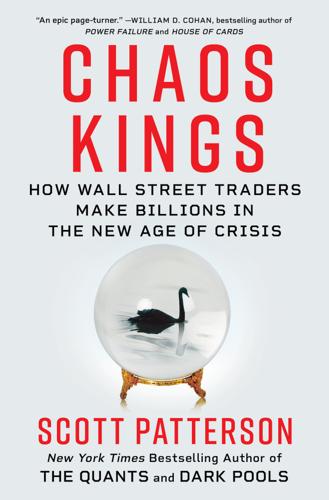
Chaos Kings: How Wall Street Traders Make Billions in the New Age of Crisis
by
Scott Patterson
Published 5 Jun 2023
It was a “forum for big, intriguing and/or disturbing ideas advanced by intellectuals who have a track record of major achievements in their fields,” the Guardian wrote. That week, the Edgies were gathering at SpaceX and the ritzy Andaz West Hollywood hotel to hear presentations about the latest advances in microbiology from experts such as Harvard Medical School geneticist George Church and Craig Venter, the biotechnologist who first mapped the human genome. Brockman had earlier sent Taleb a list of topics included in the so-called Master Class, a dizzying witches’ brew of techno-wizardry: what is life, origins of life, in-vitro synthetic life, mirror life, metabolic engineering for hydrocarbons and pharmaceuticals, computational tools, electronic-biological interfaces, nanotech-molecular manufacturing, biosensors, accelerated lab evolution, engineered personal stem cells, multivirus-resistant cells, humanized mice, bringing back extinct species.
…
From where I sit and how I work, that really is what you’re talking about.” Taleb’s eyebrows furrowed as he thought a moment. “You know, Rupert, you’re absolutely right,” he said. “We should write about it. You and me.” After returning to the U.S., Taleb began acquainting himself with the vast literature behind the precautionary principle. He didn’t recall that George Church, the Harvard geneticist, had mentioned the principle in his presentation in 2009 at Brockman’s Edge meeting at Elon Musk’s SpaceX. But he did recollect his feeling of extreme unease verging on nausea concerning the topics discussed there, such as synthetically tampering with DNA and the potential that a vaccine-evading strain of smallpox might one day be created in a high-school lab—a risk he’d called “fat-tail city.”
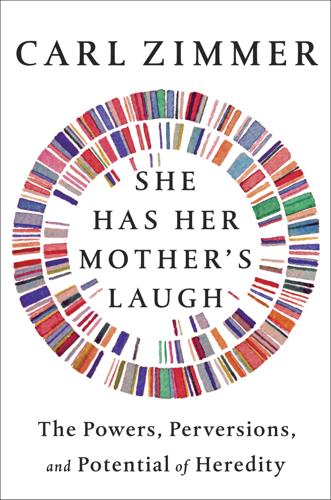
She Has Her Mother's Laugh
by
Carl Zimmer
Published 29 May 2018
“I ask you to think about how business competition might kick in with fertility clinics offering the latest upgrades for your offspring. Think about how the market works.” Most of the scientists at the meeting shied away from even mentioning enhancement. One exception was a towering, long-bearded geneticist from Harvard named George Church. Enhancement was coming, Church said, and it would begin not with embryos but with old people. Here’s one way that might happen. Nine percent of older people suffer from brittle bones due to osteoporosis. Cells in their skeleton start to break down the surrounding bone, releasing the minerals into the bloodstream.
…
Human genetic engineering had been the stuff of speculation for more than fifty years, since Rollin Hotchkiss had worried over it. But the idea of overriding heredity to cure diseases with gene drive came as a bigger surprise. Even most scientists who worked on CRISPR hadn’t seen it coming. There were exceptions: George Church and one of his colleagues at Harvard, Kevin Esvelt, had been musing about the idea. In 2014, they and some of their colleagues published a couple of speculative pieces. But they called CRISPR-based gene drive only a “theoretical technology.” Once Bier and Gantz revealed the mutagenic chain reaction, the technology was no longer theoretical.
…
Nature Reviews Cancer 1:77–82. Balmer, Jennifer. 2014. “Smoking Mothers May Alter the DNA of Their Children.” Science, July 28. http://www.sciencemag.org/news/2014/07/smoking-mothers-may-alter-dna-their-children (accessed August 4, 2017). Baltimore, David, Paul Berg, Michael Botchan, Dana Carroll, R. Alta Charo, George Church, Jacob E. Corn, and others. 2015. “Biotechnology: A Prudent Path Forward for Genomic Engineering and Germline Gene Modification.” Science 348:36–38. Barkan, Elazar. 1992. The Retreat of Scientific Racism: Changing Concepts of Race in Britain and the United States Between the World Wars. Cambridge: Cambridge University Press.

Is the Internet Changing the Way You Think?: The Net's Impact on Our Minds and Future
by
John Brockman
Published 18 Jan 2011
Taleb Calling You on Your Crap: Sean Carroll How I Think About How I Think: Lera Boroditsky I Am Not Exactly a Thinking Person— I Am a Poet: Jonas Mekas Kayaks Versus Canoes: George Dyson The Upload Has Begun: Sam Harris Hell if I Know: Gregory Paul What I Notice: Brian Eno It’s Not What You Know, It’s What You Can Find Out: Marissa Mayer When I’m on the Net, I Start to Think: Ai Weiwei The Internet Has Become Boring: Andrian Kreye The Dumb Butler: Joshua Greene Finding Stuff Remains a Challenge: Philip Campbell Attention, Crap Detection, and Network Awareness: Howard Rheingold Information Metabolism: Esther Dyson Ctrl + Click to Follow Link: George Church Replacing Experience with Facsimile: Eric Fischl and April Gornik Outsourcing the Mind: Gerd Gigerenzer A Prehistorian’s Perspective: Timothy Taylor The Fourth Phase of Homo sapiens: Scott Atran Transience Is Now Permanence: Douglas Coupland A Return to the Scarlet-Letter Savanna: Jesse Bering Take Love: Helen Fisher Internet Mating Strategies: David M.
…
It makes us sick long-term, as well as giving us indigestion and hypoglycemic fits. Could that be true of information sugar as well? Will we become allergic to it even as we crave it? And what will serve as information insulin? In the spirit of brevity if not immediacy, I leave it to the reader to ponder these questions. Ctrl + Click to Follow Link George Church Professor, Harvard University; director, Personal Genome Project. If time did permit, I’d begin with the “How” of “How is the Internet changing the way you think?” Not “how much?” or “in what manner?” but “for what purpose?” “To be, that is the question.” Does the Internet pose an existential risk to all known intelligence in the universe or a path to survival?

This Will Make You Smarter: 150 New Scientific Concepts to Improve Your Thinking
by
John Brockman
Published 14 Feb 2012
Gerald Holton Skeptical Empiricism In politics and society at large, important decisions are all too often based on deeply held presuppositions. Thomas A. Bass Open Systems Now that the Web has frothed through twenty years of chaotic inventiveness, we have to push back against the forces that would close it down. George Church Non-Inherent Inheritance We are well into an unprecedented new phase of evolution, in which we must generalize beyond our DNA-centric worldview. Paul Kedrosky Shifting Baseline Syndrome We don’t have enough data to know what is normal, so we convince ourselves that this is normal.
…
Now that the Web has frothed through twenty years of chaotic inventiveness, we have to push back against the forces that would close it down. A similar push should be applied to other systems veering toward closure. “Citoyens, citoyennes, arm yourselves with the concept of openness.” Non-Inherent Inheritance George Church Professor, Harvard University; director, Personal Genome Project The names Lysenko and Lamarck are nearly synonymous with bad science—worse than merely mediocre science because of the huge political and economical consequences. From 1927 to 1964, Trofim Lysenko managed to keep the theory of the inheritance of acquired characteristics while dogmatically directing Soviet agriculture and science.

What to Think About Machines That Think: Today's Leading Thinkers on the Age of Machine Intelligence
by
John Brockman
Published 5 Oct 2015
TOMASO POGGIO “Turing+” Questions PAMELA MCCORDUCK An Epochal Human Event MARCELO GLEISER Welcome to Your Transhuman Self SEAN CARROLL We Are All Machines That Think NICHOLAS G. CARR The Control Crisis JON KLEINBERG & SENDHIL MULLAINATHAN We Built Them, but We Don’t Understand Them JAAN TALLINN We Need to Do Our Homework GEORGE CHURCH What Do You Care What Other Machines Think? ARNOLD TREHUB Machines Cannot Think ROY BAUMEISTER No “I” and No Capacity for Malice KEITH DEVLIN Leveraging Human Intelligence EMANUEL DERMAN A Machine Is a “Matter” Thing FREEMAN DYSON I Could Be Wrong DAVID GELERNTER Why Can’t “Being” or “Happiness” Be Computed?
…
By way of analogy: Since the Manhattan Project, nuclear scientists have moved on from increasing the power extracted from nuclear fusion to the issue of how to best contain it—and we don’t even call that nuclear ethics. We call it common sense. WHAT DO YOU CARE WHAT OTHER MACHINES THINK? GEORGE CHURCH Professor of genetics, Harvard Medical School; director, Harvard University’s Personal Genome Project; coauthor (with Ed Regis), Regenesis: How Synthetic Biology Will Reinvent Nature and Ourselves I am a machine that thinks, made of atoms—a perfect quantum simulation of a many-body problem—a 1029-body problem.

Mossad: The Greatest Missions of the Israeli Secret Service
by
Michael Bar-Zohar
and
Nissim Mishal
Published 1 Jan 2010
For a few months, he worked at odd jobs in Sydney, but most of the time he was lonely and miserable. One evening, he strolled through one of the most disreputable neighborhoods of the city, a haven for prostitutes, petty thieves, and drug dealers. From the darkness, in front of him, emerged the spire of the Saint George church, a known refuge of tormented souls—desperate people, criminals, homeless wanderers, poor and oppressed men and women. He walked in and met the Anglican priest John McKnight. The good priest immediately realized that Vanunu was looking for a home and a family. He established a close and warm contact with his shy, insecure guest.
…
It was a huge transition for an observant Jew, born in Marrakesh, who had spent his youth in Talmudic schools and yeshivas of Beersheba. True, his religious zeal had waned years ago, but his conversion was more a product of his instability and confusion than of his disappointment with Judaism. If he had not walked into Saint George church and met Father John, he might have converted to Buddhism or some other religion. But by turning his back on Judaism, he also turned his back on Israel. His aversion to his country gradually became one of the major motives for his future actions. During a social meeting at the church, Vanunu told his new friends about his work in Israel, described the Dimona reactor, and offered to make a slide show with the photographs he had taken.

The Transhumanist Reader
by
Max More
and
Natasha Vita-More
Published 4 Mar 2013
This was particularly true when speaking with leaders in neuroscience, computer science, and related fields such as the burgeoning fields of neural engineering and nanotechnology. Whole brain emulation was science fiction, beyond the horizon of feasible science and engineering. That is not true any more. Now, leading scientists and principal investigators, including Ed Boyden, Sebastian Seung, Ted Berger, and George Church, consider high resolution connectomics and efforts towards whole brain emulation to be serious and relevant research and technology development goals addressed in their laboratories. Structural Connectomics and Functional Connectomics In the brain, processing and memory are both distributed and involve very large numbers of components.
…
After the payloads are delivered to the full set of neurons examined the cell bodies are extracted and DNA recovered from each. By identifying the specific DNA sequences found within it would be possible to find matching pairs of tags, which in effect act as pointers between pairs of connected neurons. Ground-breaking work on functional connectomics includes work in the lab of George Church (Harvard), who is well known for his work in genomics, but now has a keen interest in developing high-resolution, large-scale acquisition and interfacing technology. The approach taken there involves work by Yael Maguire to develop measurement devices at the scale of red blood cells (about 8 micrometers in diameter).
…
As in the case of structural connectomics, there are also alternative tool developments aimed at recording characteristic functional responses in all neurons, but that choose a biological implementation. They are a collection of designs being developed in collaboration between groups already listed above (Ed Boyden, George Church, Yael Maguire), as well as Konrad Kording, and Rebecca Weisinger and myself (Halcyon Molecular). This category of biological recording designs is collectively and tentatively identified as “molecular ticker-tape” approaches. Structure-Function and Questions of Resolution and Scope As we pointed out in the preceding paragraphs, both structure and function are important, and they are not entirely independent either.

Physics of the Future: How Science Will Shape Human Destiny and Our Daily Lives by the Year 2100
by
Michio Kaku
Published 15 Mar 2011
Robert Bowman, Institute for Space and Security Studies Lawrence Brody, chief of the Genome Technology Branch, National Institutes of Health Rodney Brooks, former director, MIT Artificial Intelligence Laboratory Lester Brown, founder of Earth Policy Institute Michael Brown, professor of astronomy, Caltech James Canton, founder of Institute for Global Futures, author of The Extreme Future Arthur Caplan, director, Center for Bioethics, University of Pennsylvania Fritjof Capra, author of The Science of Leonardo Sean Carroll, cosmologist, Caltech Andrew Chaikin, author of A Man on the Moon Leroy Chiao, former NASA astronaut George Church, director, Center for Computational Genetics, Harvard Medical School Thomas Cochran, physicist, Natural Resources Defense Council Christopher Cokinos, science writer, author of The Fallen Sky Francis Collins, director of the National Institutes of Health Vicki Colvin, director of Biological and Environmental Nanotechnology, Rice University Neil Comins, author of The Hazards of Space Travel Steve Cook, director of Space Technologies, Dynetics, former NASA spokesperson Christine Cosgrove, author of Normal at Any Cost Steve Cousins, president and CEO, Willow Garage Brian Cox, physicist, University of Manchester, BBC science host Phillip Coyle, former assistant secretary of defense, U.S.
…
Since the Neanderthals were our closest genetic relative, they are a subject of intense interest among scientists. Some have raised the possibility of one day reconstructing the DNA of the Neanderthal and inserting it into an egg, which may one day become a living Neanderthal. Then, after thousands of years, the Neanderthal may one day walk the surface of the earth. George Church of the Harvard Medical School even estimated that it would cost only $30 million to bring the Neanderthal back to life, and he even laid out a plan to do so. One could first divide the entire human genome into chunks, with 100,000 DNA pairs in each piece. Each one would be inserted into a bacterium and then altered genetically so the genome matched that of the Neanderthal.

WTF?: What's the Future and Why It's Up to Us
by
Tim O'Reilly
Published 9 Oct 2017
Might we one day be able to fill the blood with nanobots—tiny machines—that repair our cells, relegating the organ and hip replacements of today, marvelous as they are, to a museum of antiquated technology? Or will we achieve that not through a perfection of the machinist’s art but through the next steps in the path trod by Luther Burbank? Amazing work is happening today in synthetic biology and gene engineering. George Church and his colleagues at Harvard are beginning a controversial ten-year project to create from scratch a complete human genome. Ryan Phelan and Stewart Brand’s Revive and Restore project is working to use gene engineering to restore genetic diversity to endangered species, and perhaps one day to bring extinct species back to life.
…
Katz, “Human Capital and Social Capital: The Rise of Secondary Schooling in America, 1910 to 1940,” National Bureau of Economic Research, NBER Working Paper No. 6439, March 1998, doi:10.3386/w6439. 321 free for all residents: Nanette Asimov, “SF Reaches Deal for Free Tuition at City College,” SFGate, February 27, 2017, http://www.sfgate.com/bayarea/article/SF-reaches-deal-for-free-tuition-at-City-College-10912051.php. 321 “then we have a problem”: “Former ambassador Jeffrey Bleich speaks on Trump, disruptive technology, and the role of education in a changing economy,” an edited transcript of the keynote address delivered by Jeffrey Bleich at Universities Australia’s higher education conference in Canberra on March 1, 2017, The Conversation, updated March 6, 2017, http://theconversation.com/former-ambassador-jeffrey-bleich-speaks-on-trump-disruptive-technology-and-the-role-of-education-in-a-changing-economy-73957. 323 “he effects by Discoveries and Inventions”: Abraham Lincoln, “Lecture on Discoveries and Inventions,” April 6, 1858, Abraham Lincoln Online, retrieved April 4, 2017, https://www.abraham lincolnonline.org/lincoln/speeches/dis coveries.htm. 327 man and machine together design new forms: “Generative Design,” autodesk.com, retrieved April 4, 2017, http://www.auto desk.com/solutions/generative-design. 328 half the size and uses half the material: “3D Makeover for Hyper-efficient Metalwork,” Arup, May 11, 2015, http://www.arup.com/news/2015_05_may/11_may_3d_makeover_for_hyper-effi cient_metalwork. 328 create from scratch a complete human genome: Jef D. Boeke, George Church, Andrew Hessel, Nancy J. Kelley, et al., “The Genome Project-Write,” Science, July 8, 2016, 126–27, doi:10.1126/science.aaf6850. For a popular account, see Sharon Begley, “Audacious Project Plans to Create Human Genomes from Scratch,” Stat, June 2, 2016, https://www.statnews.com/2016/06/02/project-human-genome-synthesis/. 328 bring extinct species back to life: “Revive & Restore: Genetic Rescue for Endangered and Extinct Species,” retrieved April 4, 2017, http://reviverestore.org. 328 rewrite the DNA inside living organisms: “CRISPR/Cas9 and Targeted Genome Editing: A New Era in Molecular Biology,” New England Biolabs, retrieved April 4, 2017, https://www.neb.com/tools-and-resources/feature-articles/crispr-cas9-and-targeted-genome-editing-a-new-era-in-molecular-biology. 328 prosthetic limbs that provide sensory feedback: “Neurotechnology Provides Near-Natural Sense of Touch,” DARPA, September 11, 2015, http://www.darpa. mil/news-events/2015-09-11. 328 respond directly to the mind: Emily Reynolds, “This Mind-Controlled Limb Can Move Individual Fingers,” Wired, February 11, 2016, http://www.wired.co. uk/article/mind-controlled-prosthetics. 329 a neural memory implant as a cure for Alzheimer’s: Elizabeth Dwoskin, “Putting a Computer in Your Brain Is No Longer Science Fiction,” Washington Post, August 25, 2016, https://www.washingtonpost.com/news/the-switch/wp/2016/08/15/putting-a-computer-in-your-brain-is-no-longer-science-fiction/. 329 enhancing human intelligence: Bryan Johnson, “The Combination of Human and Artificial Intelligence Will Define Humanity’s Future,” TechCrunch, October 12, 2016, https://techcrunch.com/2016/10/12/the-combination-of-human-and-artificial-intelligence-will-define-humanitys-future/. 329 “helps with certain severe brain injuries”: Tim Urban, “Neuralink and the Brain’s Magical Future,” Wait But Why, April 20, 2017, http://waitbutwhy.com/2017/04/neuralink.html. 329 “get the Human Colossus working on the cause”: Ibid. 330 a direct neural interface: Elon Musk, quoted in Tim Urban, “Neuralink and the Brain’s Magical Future.” 330 “the capacity of people to take in, process, and use information”: Ibid. 330 “I want to make humans cool again”: Janelle Nanos, “Is Paul English the Soul of the New Machine?
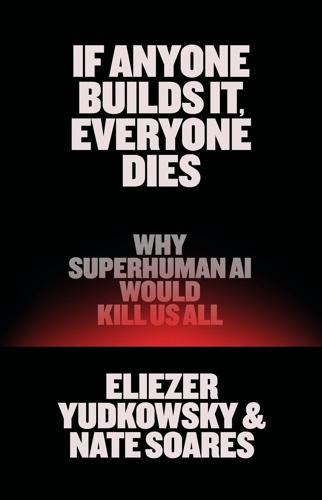
If Anyone Builds It, Everyone Dies: Why Superhuman AI Would Kill Us All
by
Eliezer Yudkowsky
and
Nate Soares
Published 15 Sep 2025
Essential reading for anyone who cares about the future.” —Emma Sky, senior fellow, Yale Jackson School of Global Affairs “This book offers brilliant insights into history’s most consequential standoff between technological utopia and dystopia. It shows how we can and should prevent superhuman AI from killing us all.” —George Church, founding core faculty, Wyss Institute at Harvard University “A sober but highly readable book on the very real risks of AI. Both skeptics and believers need to understand the authors’ arguments and work to ensure that our AI future is more beneficial than harmful.” —Bruce Schneier, author of A Hacker’s Mind “This is our warning.
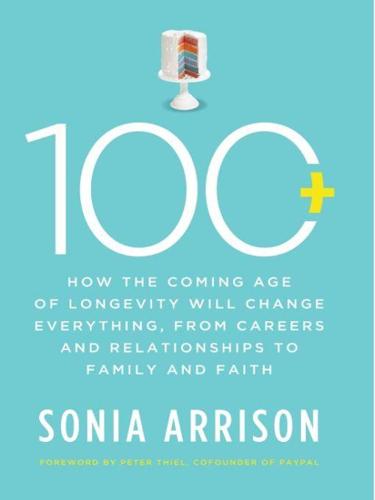
100 Plus: How the Coming Age of Longevity Will Change Everything, From Careers and Relationships to Family And
by
Sonia Arrison
Published 22 Aug 2011
First, he started the unconventional-sounding Immortality Institute, and he then moved closer to the mainstream with organizations like Singularity University, of which he was a founding architect. Now, he has cofounded a company with another connector, James Clement. The two are interested in analyzing supercentenarian genomic data to identify and speed the development of longevity therapies. Called Acron Cell, their company has attracted eminent scientist Dr. George Church of Harvard University, who developed the first direct genomic sequencing method in 1984, as an advisor. Clearly, connectors are also cooperators, and the Internet has made that job much easier than it used to be. “Bruce was always online,” said Kevin Perrott, another connector who is working on a PhD in regenerative medicine at the University of Alberta in Canada.46 As of the writing of this book, Perrott was in California doing lab work at the Buck Institute, where the longevity meme is bolstered by solid scientific research.

To Be a Machine: Adventures Among Cyborgs, Utopians, Hackers, and the Futurists Solving the Modest Problem of Death
by
Mark O'Connell
Published 28 Feb 2017
There was the Future of Humanity Institute in Oxford, and the Centre for Study of Existential Risk at the University of Cambridge, and the Machine Intelligence Research Institute in Berkeley, and the Future of Life Institute in Boston, which latter outfit featured on its board of scientific advisors not just prominent figures from science and technology like Musk and Hawking and the pioneering geneticist George Church, but also, for some reason, the beloved film actors Alan Alda and Morgan Freeman. What was it that these people were referring to when they spoke of existential risk? What was the nature of the threat, the likelihood of its coming to pass? Were we talking about a 2001: A Space Odyssey scenario, where a sentient computer undergoes some malfunction or other and does what it deems necessary to prevent anyone from shutting it down?
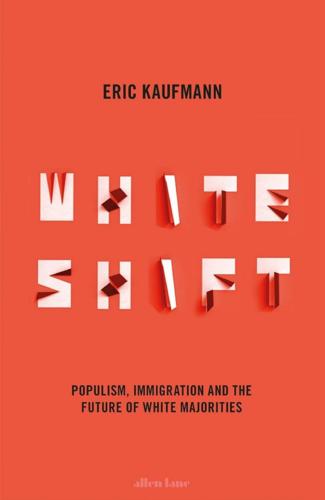
Whiteshift: Populism, Immigration and the Future of White Majorities
by
Eric Kaufmann
Published 24 Oct 2018
In his controversial Remaking Eden (1997), he claims that once some engage in positive design, others will be compelled to follow to keep up. It may even be the case that those who can afford it will have designed themselves into a hyper-intelligent, beautiful GenRich species that can’t breed with the GenPoor. Nothing that is recorded need ever die. George Church, a geneticist at Harvard, claims to be just years away from bringing the extinct Woolly Mammoth to life.31 Genetic mapping means we can identify the genetic traits which distinguish the Welsh and Cornish from the English. This opens up the possibility that not just religion or language, but race, can be revived.
…
‘Lemba tribe in southern Africa has Jewish roots, genetic tests reveal’, World Jewish Congress, 8 March 2010. 30. G. Lucotte and G. Mercier, ‘Y-chromosome DNA haplotypes in Jews: Comparisons with Lebanese and Palestinians’, Genetic Testing, 7:1 (2003), 67–71. 31. ‘Can we grow woolly mammoths in the lab? George Church hopes so’, New Scientist, 16 February 2017. 32. Smith, Ethnic Revival. 33. E. Kaufmann, ‘The religious demography of London since 1980’, in D. Goodhew and A.-P. Cooper (eds.), No Secular City: Church Growth and Decline in London, 1980 to the Present (forthcoming). 34. D. Martin, A General Theory of Secularization, Aldershot, 1993 [1978]: Gregg Revivals. 35.
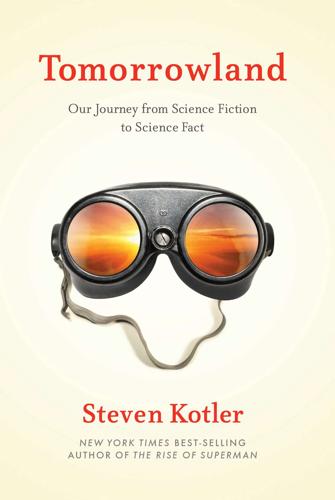
Tomorrowland: Our Journey From Science Fiction to Science Fact
by
Steven Kotler
Published 11 May 2015
Material scientists are also getting into the act; DuPont recently designed an organism that utilizes corn syrup to create a widely used polymer base for plastics manufacturing, saving 40 percent on energy costs. Other synthetic biologists are playing with more fundamental cellular mechanisms. The Florida-based Foundation for Applied Molecular Evolution has added two new bases to DNA’s traditional four (A, T, G, C), creating a new genetic alphabet. At Harvard, geneticist George Church has supercharged evolution with his Multiplex Automated Genome Engineering (MAGE) process, which randomly swaps multiple genes at once. Instead of creating novel genomes one at a time, MAGE creates billions of variants in a matter of days. Finally, because synbio makes DNA design, synthesis, and assembly so easy, we’re already moving from the tweaking of existing designs to the construction of entirely new organisms — species that have never been seen before, species birthed entirely in our imagination.
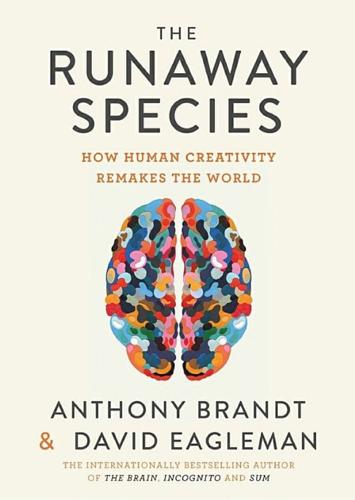
The Runaway Species: How Human Creativity Remakes the World
by
David Eagleman
and
Anthony Brandt
Published 30 Sep 2017
Neanderthals were our close genetic cousins, differing from us in about one in ten genes. They too used tools, buried their dead and built fires. Although they were bigger and stronger than us, our own ancestors vanquished them: the last Neanderthals were wiped out about 35,000–50,000 years ago. Harvard biologist George Church has proposed reverse engineering a Neanderthal by beginning with a modern human genome and working backwards. Just as Pinter reversed chronology on the stage, biologists would rewind human evolution to create a Neanderthal stem cell, which could then be implanted in the womb of a compatible female host.
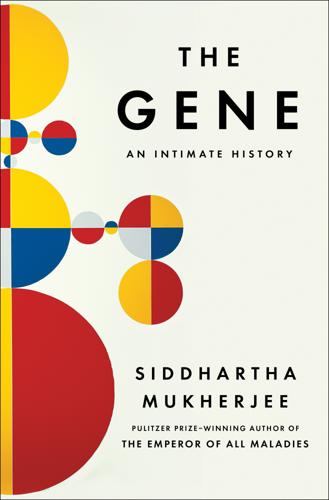
The Gene: An Intimate History
by
Siddhartha Mukherjee
Published 16 May 2016
The complete data from his experiment were never formally published. Genetic Diagnosis: “Previvors” All that man is, All mere complexities. —W. B. Yeats, “Byzantium” The anti-determinists want to say that DNA is a little side-show, but every disease that’s with us is caused by DNA. And [every disease] can be fixed by DNA. —George Church While human gene therapy was exiled to wander its scientific tundra in the late 1990s, human genetic diagnosis experienced a remarkable renaissance. To understand this renaissance, we need to return to the “future’s future” envisioned by Berg’s students on the ramparts of the Sicilian castle.
…
Doudna and Charpentier published their data: Martin Jinek et al., “A programmable dual-RNA-guided DNA endonuclease in adaptive bacterial immunity,” Science 337, no. 6096 (2012): 816–21. this technique has exploded: Key contributors to the use of CRISPR/Cas9 in human cells include Feng Zhang (MIT) and George Church (Harvard). See, for instance, L. Cong et al., “Multiplex genome engineering using CRISPR/Cas systems,” Science 339, no. 6121 (2013): 819–23; and F. A. Ran, “Genome engineering using the CRISPR-Cas9 system,” Nature Protocols 11 (2013): 2281–308. In the winter of 2014, a team: Walfred W. C. Tang et al., “A unique gene regulatory network resets the human germline epigenome for development,” Cell 161, no. 6 (2015): 1453–67; and “In a first, Weizmann Institute and Cambridge University scientists create human primordial germ cells,” Weizmann Institute of Science, December 24, 2014, http://www.newswise.com/articles/in-a-first-weizmann-institute-and-cambridge-university-scientists-create-human-primordial-germ-cells.
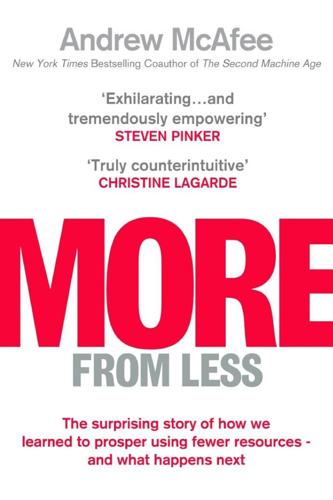
More From Less: The Surprising Story of How We Learned to Prosper Using Fewer Resources – and What Happens Next
by
Andrew McAfee
Published 30 Sep 2019
The good news is that we humans are pushing back against our own tendencies toward annihilation in four main ways. First (and closest to science fiction), research is taking place on how to bring back extinct animals by making use of the DNA that remains in their corpses. Brand is a prominent exponent of this “de-extinction” movement and is working with the geneticist George Church and others to adapt an elephant into a species more akin to a woolly mammoth.II Second, we’re fighting to preserve some of the most threatened species living on islands (where a disproportionate number of extinctions take place) by removing imported predators. To date, at least eight hundred islands have been protected in this way.
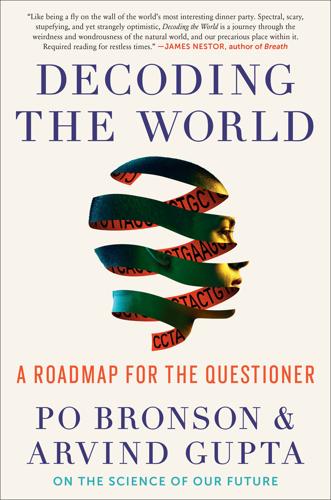
Decoding the World: A Roadmap for the Questioner
by
Po Bronson
Published 14 Jul 2020
Aaron VanDevender, Adam D’Augelli, Adam Draper, Adam Reineck, Alaa Saleh Halawa, Alan Boehme, Alan Chang, Alexander Kamb, Alex Lorestani, Amy Muhl, Andrew Hessel, Armen Vidian, Asish Xavier, Augustin Ku, Bill Gates, Bob Nelson, Brian Cork, Brian Schreier, Bruce Freidrich, Bruce Jenett, Bryan Chang, Calvin Nguyen, Celestine Johnson, Charly Chalawan, Clem Fortman, Cooper Rinzler, Costa Yiannoulis, Dan Phillips, Dan Widmaier, Dana White, David Friedberg, David Helgason, Dariush Mozaffarian, Darrin Crisitello, David Aycan, David Eagleman, Drew Endy, Dror Berman, Dylan Morris, Ela Madej, Elad Gil, Elliot Waldron, Eric Scott, Erik Moga, Francisco Gimenez, George Church, Gopi Punukollu, Harsh Patel, Hemant Taneja, Howard Shultz, Ian Rountree, Isabella Maria Jonsdottir, Jim Collins, Jake Moritz, Jason Camm, Jason Okutake, Jenny Rooke, Jeff Bezos, Jeff Harbach, Jennifer Cochran, Jennifer Doudna, Jeremy Kranz, Jerry Zeldis, Joe Luttwak, John Cumbers, John Yu, Josko Bobanovic, Jude Gomila, Kevin Hartz, Khaled Alwaleed, Kinkead Reiling, Laura Smoliar, Leonardo Teixeira, Lior Susan, Lisa Rich, Maria Gotsch, Maria Mitchell, Maria Soloveychik, Mary Wheeler, Mark Goldstein, Matias Mosse, Matias Muchnik, Matías Peire, Matias Viel, Matt Ocko, Melinda Gates, Michael Moritz, Michael Aberman, Mira Chaurushiya, Nabeel Hyatt, Nick Rosa, Nico Berman, Oleg Nodelman, Paolo Riauto, Paul Graham, Peter Kim, Reid Hoffman, Ricardo Gomes, Richard Branson, Roger Wyse, Rohan and Taj, Rohit Sharma, Ron Shigeta, Rosie Wardle, Ryan Bethencourt, Scott Banister, Scott Nolan, Seth Bannon, Shahin Farshchi, Shirl Buss, Solina Chau, Steve Jurvetson, Steve Kim, Steinnun Hjartar, Steve Sanger, Taylor Sittler, Tim Brown, Tim Draper, Timothy Lu, Tom Aiello, Tom Baruch, Tom Chi, Tony Envin, Uma Valeti, Victoria Slivkoff, Vijay Pande, Vinod Khosla and Whitney Mortimer.

Global Catastrophic Risks
by
Nick Bostrom
and
Milan M. Cirkovic
Published 2 Jul 2008
The successful adoption ofthe proposal in the academic and commercial science sectors merits further attention, as the risk-management strategy might be applicable to some of biology's other dual-use areas. 20.6.4 A risk management fram ework for de n ovo DNA synthesis tech nologies Currently, de novo D NA synthesis technologies capable of making complete pathogen genomes are concentrated in a relatively small number ofcompanies. In 2004, the Harvard biologist and biotechnology developer, George Church, proposed a safeguards strategy to ensure that the technology is not used for the illegitimate synthesis of potentially harmful genomes (Church, 2005) . This involves companies agreeing to install automated screening software that 'reads' the D NA sequence of incoming customer orders and compares them to genomes of a known list of pathogens (and, potentially, to a list of other potentially dangerous sequences, for example, those for particular genes).
…
Successful implementation of the protocol is in large part due to the proposal's non intrusive nature; rather than requiring formal oversight structures, which many scientists oppose for fear that progress might be hindered, the screening tool allows the laboratory to go about business as usual as the computer software engages in the invisible detective work. The automated nature of DNA screening is also appealing to industry because it enables the protection of customer information. M IT synthetic biologist Drew Endy, together with George Church and other colleagues such as John Mulligan, CEO of a leading D NA synthesis company, are now working to extend the screening proposal to companies overseas. Indeed, lack of unity among the various D NA providers would risk jeopardizing the entire venture since it only takes a single non compliant company to provide harmful materials to all interested customers.
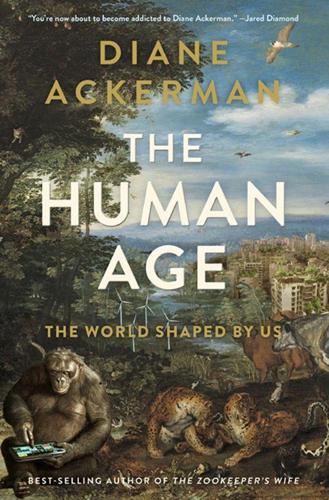
The Human Age: The World Shaped by Us
by
Diane Ackerman
Published 9 Sep 2014
Russia’s Pleistocene Park, where look-alikes of ancient cattle and horses already roam, awaits a shaggy herd of woolly mammoths, even if the grassy steppes they once grazed no longer exist. For some, de-extinction is a moral quest dusted in eco-guilt; for others, it’s a burning scientific challenge. A candid few openly admit that, for them, it’s just too cool an idea to pass up. At Harvard, the molecular geneticist George Church has pioneered ways to ramble through orchards of DNA, cherry-picking individual genes to produce desired traits or remove harrowing ones. I’ve always found Tasmanian devils endearing, maybe because they’re raucously bad-tempered and quarrelsome to a laughable extreme, and stand up like hairy sumo wrestlers when they fight.
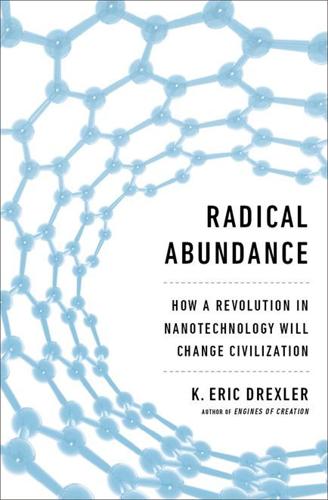
Radical Abundance: How a Revolution in Nanotechnology Will Change Civilization
by
K. Eric Drexler
Published 6 May 2013
I thank Alex Kawczak of the Battelle Memorial Institute for launching and inviting me to serve as co-leader of a roadmap development project that explored paths from today’s atomically precise fabrication technologies to the threshold of atomically precise manufacturing, and I also thank the roadmap’s many contributors from academic and corporate research groups, and from the hosting U.S. National Laboratories. During these years, George Church, Paul Rothemund, Tom Theis, and Ron Zuckerman (among many others) have provided stimulating discussions of prospects and current research in atomically precise fabrication. Longer term (across many, many years), I have learned from audiences at university lectures and seminars, and from participants in scientific, engineering, corporate, military, and environmental meetings on several continents; these extraordinarily diverse audiences have called for approaching a multitude of topics from a range perspectives, and their questions and comments have helped to shape the concepts presented in this book.

Boom: Bubbles and the End of Stagnation
by
Byrne Hobart
and
Tobias Huber
Published 29 Oct 2024
The rigid, hyper-regulated, and highly formalized bureaucracy that controls scientific funding not only degrades scientific performance but also reveals a deep bias against creativity, novelty, and risk-taking. For example, when He Jiankui, a Chinese biophysics researcher, announced in 2018 that he had created babies genetically edited to have HIV immunity, the global scientific community reacted with moral outrage. The eminent geneticist George Church, one of the few prominent scientists to defend He Jiankui, stated that the “most serious thing I’ve heard is that he didn’t do the paperwork right. He wouldn’t be the first person who got the paperwork wrong.” 117 While this particular example is polarizing, ethically charged, and far from unambiguous, the extreme reaction can be understood as a symptom of the dominance of the “global bureaucratic empire of science,” which seems to privilege regulatory compliance over scientific novelty. 118 Radical scientific novelty—which is uncertain and probabilistic, and as such lacks validation—is incompatible with bureaucratic rationality, which is geared toward repeatability, control, and procedure.

Human Frontiers: The Future of Big Ideas in an Age of Small Thinking
by
Michael Bhaskar
Published 2 Nov 2021
Viruses that create batteries and proteins that purify water.51 Cheap, personalised cancer vaccines made at scale and low cost could be another hammer to Eroom. Crops resistant to infection; microbially produced smartphone screens; livestock like pigs used for growing organ transplants, so called xenotransplantation – the pioneering Harvard scientist George Church and his lab are already overcoming hurdles here. So-called gene drives see disease-spreading insects or invasive species edited to lose reproductive capacity, whittling down their populations. Nanomedicine is coming of age, not least in the fight against Covid-19, but also in the treatment of other conditions like multiple sclerosis.

The Equality Machine: Harnessing Digital Technology for a Brighter, More Inclusive Future
by
Orly Lobel
Published 17 Oct 2022
Steven Reinberg, “Angelina Jolie Has Preventative Double Mastectomy,” MedicineNet, May 14, 2013, https://www.medicinenet.com/script/main/art.asp?articlekey=169836. 10. “Cancer Statistics,” National Cancer Institute, National Institutes of Health, last updated September 25, 2020, https://www.cancer.gov/about-cancer/understanding/statistics. 11. Catherine Mohr, Siddhartha Mukherjee, Regina Barzilay, George Church, and Jennifer Egan, “From Gene Editing to A.I., How Will Technology Transform Humanity?,” New York Times, November 16, 2018, https://www.nytimes.com/inter active/2018/11/16/magazine/tech-design-medicine-phenome.html. 12. Mohr et al., “From Gene Editing to A.I.” 13. Mohr et al., “From Gene Editing to A.I.”; John McCormick, “MIT Professor Who Advanced Cancer Treatment Wins $1 Million AI Prize,” Wall Street Journal, September 23, 2020, https://www.wsj.com/articles/mit-professor-who-advanced-cancer-treatment-wins-1-million-ai-prize-11600876827. 14.

The Coming Wave: Technology, Power, and the Twenty-First Century's Greatest Dilemma
by
Mustafa Suleyman
Published 4 Sep 2023
Particular thanks go to the many people who read the entire draft and commented in detail; their generosity and extraordinary level of insight were completely invaluable in getting to the final manuscript. A huge thanks to Gregory Allen, Graham Allison (and the faculty and staff of Harvard’s Belfer Center more widely), Sahar Amer, Anne Applebaum, Julian Baker, Samantha Barber, Gabriella Blum, Nick Bostrom, Ian Bremmer, Erik Brynjolfsson, Ben Buchanan, Sarah Carter, Rewon Child, George Church, Richard Danzig, Jennifer Doudna, Alexandra Eitel, Maria Eitel, Henry Elkus, Kevin Esvelt, Jeremy Fleming, Jack Goldsmith, Al Gore, Tristan Harris, Zaid Hassan, Jordan Hoffman, Joi Ito, Ayana Elizabeth Johnson, Danny Kahneman, Angela Kane, Melanie Katzman, Henry Kissinger, Kevin Klyman, Heinrich Küttler, Eric Lander, Sean Legassick, Aitor Lewkowycz, Leon Marshall, Jason Matheny, Andrew McAfee, Greg McKelvey, Dimitri Mehlhorn, David Miliband, Martha Minow, Geoff Mulgan, Aza Raskin, Tobias Rees, Stuart Russell, Jeffrey Sachs, Eric Schmidt, Bruce Schneier, Marilyn Thompson, Mayo Thompson, Thomas Viney, Maria Vogelauer, Mark Walport, Morwenna White, Scott Young, and Jonathan Zittrain.
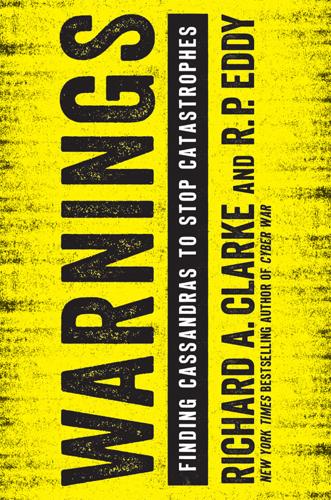
Warnings
by
Richard A. Clarke
Published 10 Apr 2017
A CRISPR FUTURE Despite the failure of the Chinese scientists’ experiment with human embryos, other researchers are already making significant strides in reducing CRISPR’s error rate. Some believe that improvements to the technology will soon render it safe enough for experimentation on humans, if we haven’t reached that point already. Dr. George Church, a geneticist at Harvard and a signatory of the commentary that laid out the Napa conference’s recommendations, estimates that advances could yield an error rate of about 1 in 300 trillion base-pairs (for reference, the entire human genome is 1/100,000 that number), about the same rate that genetic errors occur naturally.
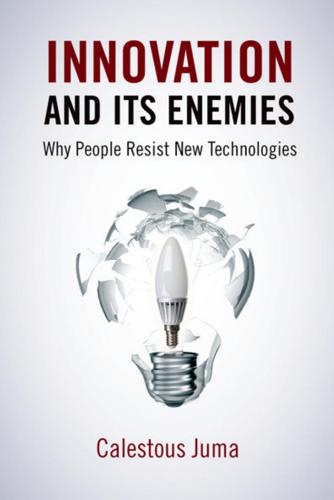
Innovation and Its Enemies
by
Calestous Juma
Published 20 Mar 2017
Hiltzik, Dealers of Lightning: Xerox PARC and the Dawn of the Computer Age (New York, HarperBusiness, 2000). 55. See, for example, Rachel Schurman and William A. Munro, Fighting for the Future of Food: Activists versus Agribusiness in the Struggle over Biotechnology (Minneapolis: University of Minnesota Press, 2010). 56. Kenneth A. Oye, Kevin Esvelt, Evan Appleton, Flaminia Catteruccia, George Church, Todd Kuiken, Shlomiya Bar-Yam Lightfoot, Julie McNamara, Andrea Smidler, and James P. Collins, “Regulating Gene Drives,” Science 345, no. 6197 (2014): 626–628. 57. Gary E. Marchant, Braden R. Allenby, and Joseph R. Herkert, eds., The Growing Gap between Emerging Technologies and Legal-Ethical Oversight: The Pacing Problem (Dordrecht: Springer, 2011). 58.

Lonely Planet Cyprus
by
Lonely Planet
,
Jessica Lee
,
Joe Bindloss
and
Josephine Quintero
Published 1 Feb 2018
The town sprawls beside a seasonal lake – from which it derives its name – while its core is centred on a large main square home to two fine churches. Anyone with an interest in frescos will appreciate a quick stop off here to view the churches on a drive through the region. 1Sights Agios GeorgiosCHURCH (St George's Church; GOOGLE MAP ; Agiou Georgiou; h9am-1pm & 3-6pm Mon-Fri, 9am-1pm Sat) Paralimni's town square is dominated by two churches both, dedicated to St George. The older church (tucked behind the modern church) was built in the 19th century and is home to a large, beautiful fresco of St George. The larger, modern Agios Georgios was constructed in the 1960s and has an interior covered in colourful frescoes, including Christ Pantocrator on the dome.
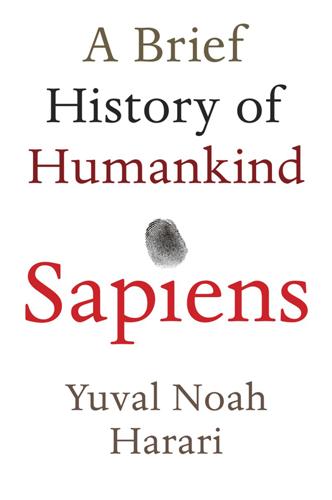
Sapiens: A Brief History of Humankind
by
Yuval Noah Harari
Published 1 Jan 2011
They now plan to take a fertilised egg-cell of a present-day elephant, replace the elephantine DNA with a reconstructed mammoth DNA, and implant the egg in the womb of an elephant. After about twenty-two months, they expect the first mammoth in 5,000 years to be born.9 But why stop at mammoths? Professor George Church of Harvard University recently suggested that, with the completion of the Neanderthal Genome Project, we can now implant reconstructed Neanderthal DNA into a Sapiens ovum, thus producing the first Neanderthal child in 30,000 years. Church claimed that he could do the job for a paltry $30 million.

Whole Earth: The Many Lives of Stewart Brand
by
John Markoff
Published 22 Mar 2022
A restored Xerces would become a powerful symbol of what French philosopher Bruno Latour describes as “Gaia 2.0.”[1] We have entered the Anthropocene era, and having completely reshaped our planet, we are faced with the reality that consciousness of humanity’s impact on the world entails responsibility as well. It is that realization that is the heart of Stewart Brand’s contribution and his continuing relevance. Revive & Restore was launched as a Long Now Foundation project in early 2012 after Brand and Phelan sponsored a small symposium at the Harvard Medical School, hosted by geneticist George Church, called Bringing Back the Passenger Pigeon. While watching Church demonstrate new gene-editing techniques, it confirmed for them that if it was possible to revive the passenger pigeon, it would be possible to bring back other species as well, offering a path to restoring biodiversity, essential for combating the effects of global warming.

The Zero Marginal Cost Society: The Internet of Things, the Collaborative Commons, and the Eclipse of Capitalism
by
Jeremy Rifkin
Published 31 Mar 2014
Two researchers, Nick Goldman and Ewan Birney, converted text from five computer files—which included an MP3 recording of Martin Luther King Jr.’s “I Have a Dream” speech, a paper by James Watson and Francis Crick describing the structure of DNA, and all of Shakespeare’s sonnets and plays—and converted the ones and zeros of digital information into the letters that make up the alphabet of the DNA code. The code was then used to create strands of synthetic DNA. Machines read the DNA molecules and returned the encoded information.64 This innovative method opens up the possibility of virtually unlimited information storage. Harvard researcher George Church notes that the information currently stored in all the disk drives in the world could fit in a tiny bit of DNA the size of the palm of one’s hand. Researchers add that DNA information can be preserved for centuries, as long as it is kept in a dark, cool environment.65 At this early stage of development, the cost of reading the code is high and the time it takes to decode information is substantial.
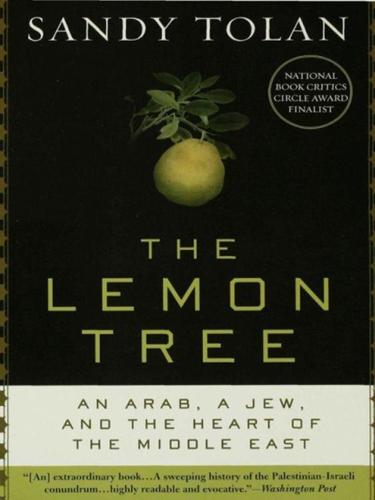
Lemon Tree: An Arab, a Jew, and the Heart of the Middle East
by
Sandy Tolan
Published 1 Jan 2006
Word had come that King Abdullah's Arab Legion would be pulling out its sparse troops, leaving a few civilian defenders, a meager supply of weapons, and the bullets Sheikh Mustafa had brought back from Transjordan. This would be no match for the army of Israel. Soon more people arrived in the shelters with news from Lydda. Jewish soldiers were pulling people out of their homes, marching them to the mosques or St. George's Church. Others were leaving town to the east, to undertermined destinations. A few resisters were holding out from the police fort, but no one expected them to last much longer. After all their preparations—digging trenches, opening a medical clinic, buying an ambulance, stockpiling months of food, even robbing a train with provisions earmarked for the Haganah—it had come down to a word no one had dared speak: surrender.

Germany Travel Guide
by
Lonely Planet
Sights Haus der Geschichte MUSEUM (902 440; Altrathausplatz 14; adult/child €4/2; 9am-6pm Mon-Fri, 10am-5pm Sat & Sun May-Oct, 10am-5pm daily Nov-Apr) Near the Wörnitzer Tor, Dinkelsbühl’s history comes under the microscope at the Haus der Geschichte, which occupies the old town hall. There’s an interesting section on the Thirty Years’ War and a gallery with paintings depicting Dinkelsbühl at the turn of the century. Audioguides are included in the ticket price. Münster St Georg CHURCH (Marktplatz 1) Standing sentry over the heart of Dinkelsbühl is one of southern Germany’s purest late-Gothic hall churches. Rather austere from the outside, the interior stuns with an incredible fan-vaulted ceiling. A curiosity is the Pretzl Window donated by the bakers’ guild; it’s located in the upper section of the last window in the right aisle.
…
A bit of a lad, Goethe conducted detailed research on Tübingen’s pubs during his weeklong stay in 1797. The party-loving genius is commemorated by the plaque ‘Hier wohnte Goethe’ (Goethe lived here). On the wall of the grungy student digs next door is the perhaps more insightful sign ‘Hier kotzte Goethe’ (Goethe puked here). Stiftskirche St Georg CHURCH (Am Holzmarkt; 9am-5pm) The late-Gothic Stiftskirche shelters the tombs of the Württemberg dukes and some dazzling late-medieval stained-glass windows. Platanenallee PROMENADE Steps lead down from Eberhardsbrücke bridge to Platanenallee, a leafy islet on the Neckar River canopied by sycamore trees, with views up to half-timbered houses in a fresco painter’s palette of pastels and turreted villas nestled on the hillsides.

Future Crimes: Everything Is Connected, Everyone Is Vulnerable and What We Can Do About It
by
Marc Goodman
Published 24 Feb 2015
The emerging field of bio-storage leverages synthetic biology to encode data in living things via their DNA code, taking the ones and zeros of our digital computers and translating them into the ATCGs of genetic code and embedding them into DNA. Text, images, music, and video can and have all been encoded and stored within cells, and the efficiencies are breathtaking. The legendary geneticist, molecular engineer, and Harvard professor George Church has concluded that “about four grams of DNA theoretically could store the digital data humankind creates in one year.” Not only do such storage techniques vastly outlast magnetic media by a few hundred thousand years (we can still read dinosaur DNA), but they are more than a million times denser than today’s electronic storage technologies.
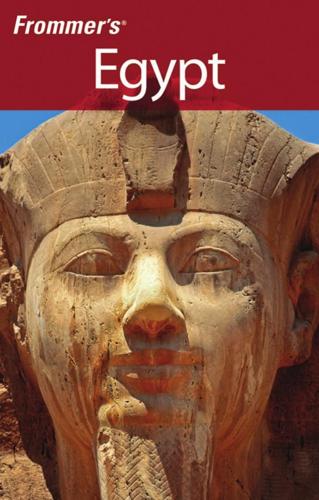
Frommer's Egypt
by
Matthew Carrington
Published 8 Sep 2008
See also Restaurants Index Al Alamein, 152 Alexandria, 143–148 Bahareya, 273 best, 6 Cairo, 110–115 Dahab, 168–169 Dakhla, 284–285 El Quseir, 197 Gouna, 213–214 Kharga, 291 Luxor, 239–241 Marsa Matruh, 154–155 Nuweiba, 161–162 price categories, 47 Sharm el Sheikh, 182–184 Siwa, 264–265 tips on, 47 Restrooms, 54 RoadPost, 39 Rock paintings, Teneida, 282 Rodgers Travel, 34 Roman rule in Egypt, 294–295 Roman Spring (Ain Romani; Farafra), 274 Rommel’s Beach (Marsa Matruh), 153 Rommel’s Cave (Marsa Matruh), 153 Rosetta (Rashid), 149–150 16_259290-bindex.qxp 7/22/08 12:41 AM Page 333 GENERAL INDEX Royal Jewelry Museum (Alexandria), 139 Ruins and archaelogical sites Memphis, 123 Saqqara, 123–124 S aad Zagloul Square (Alexandria), 134 Safaga, 66, 71, 198–202 Safaris and trekking, 68–70 Safety concerns, 29–30 Sahara Adventure Shop (Siwa), 260 Sahara Desert Company, 71 St. Anthony, Monastery of (near Hurghada), 210 St. Catherine, 170–175 St. Catherine, Church of (St. Catherine), 172 St. Catherine, Mount, 172 St. Catherine’s Monastery, 171–172 St. Catherine’s Monastery (Dahab), 165 St. George, Church of (Cairo), 100 St. Paul, Monastery of (near Hurghada), 210 Salam Express (Safaga), 199 Salem Express, 66 Sandboarding, Siwa, 259–260 Sangria (Cairo), 121 Saqqara, 123–124 SATH (Society for Accessible Travel & Hospitality), 31 Scuba diving, 65–68 Alexandria, 136 best spots for, 8 Dahab, 164–165 Gouna, 212 Hurghada, 204 Marsa Matruh, 153 Safaga, 198–199 Sharm el Sheikh, 179 Seascope (Sharm el Sheikh), 180 Seasons, 16–17 Sekem Organic Food (Cairo), 118 Senior travel, 33 Sennedjem, tomb of (Luxor), 226 Sennofer, tomb of (Luxor), 231 Serapeum (Saqqara), 124 Seth, 303, 304 Seti I Temple of (Luxor), 229 tomb of (Luxor), 230 Seven Pillars (Safaga), 199 The Seventeenth Star (El Quseir), 198 Sexism, 30–31 Sexual harassment, 30 Shaalan Surgicenter (Cairo), 52 Shali, 260 Sham El Nessim, 18 Shannon Desert Tribe (Cairo), 69 Sharm el Sheikh, 67, 175–185 accommodations, 181–182 getting around, 178 nightlife, 184 orientation, 175–176 restaurants, 182–184 shopping, 185 sights and activities, 179–180 tourist information, 178 traveling to, 177–178 Sharm el Sheikh International Airport (SSH), 19 Shopping Alexandria, 149 Aswan, 253 Bahareya, 273 best, 3 Cairo, 116–119 Dakhla, 285 Luxor, 241–242 Sharm el Sheikh, 185 Siwa, 264–266 Sidestep.com, 20 Sights and attractions, south of Luxor, 231–232 Sinai, Mount (Jebel Moussa), 171 Sinai Liberation Day, 18 Sinai Peninsula, 11, 14, 70, 156–185 suggested itineraries, 61–64 Sinbad (Luxor), 222 Single travelers, 35 Sirenput II, tomb of (Aswan), 247 Siwa, 255–266 accommodations, 261–264 getting around, 255–257 guides, 69 Internet access, 258–259 orientation, 257–258 restaurants, 264–265 shopping, 265–266 sights and activities, 259–261 traveling to, 255 tribal politics in, 257 visitor information, 258 Siwa House Museum, 261 Skycruise (Luxor), 222 333 Smoking, 54 Snakes, 28 Snorkeling Dahab, 165 Hurghada, 204 Society for Accessible Travel & Hospitality (SATH), 31 Sofianopoulo (Alexandria), 148–149 Solar Barque Museum, 86 Sol y Mar Mout 3, hot springs, 281 Souk el Fustat (Cairo), 119 Soul Iwona (Dahab), 164 Soul of America, 34 Sound and light show, Cairo, 91 Sound-and-light show, Luxor, 225 Sound & Light Show, at Philae, 250 Spitfire (Alexandria), 149 Sports Mall (Cairo), 119 Spring Tours, 237 Spring Tours (Sharm el Sheikh), 178 STA Travel, 21, 35 Straits of Tiran (Sharm el Sheikh), 179 Student travel, 34–35 Subex, 66 Submarines Sekala, 204 Sharm el Sheikh, 180 Sufi dancing, 99 Sun/elements/extreme weather exposure, 28 Surfing, 71 Sustainable tourism/ecotourism, 36–37 T aba Heights, 156–159 Taxes, 54 Tea, 312 Telephones, 38–39 Temperatures, average monthly, 16 Temple of Alexander the Great (Bahareya), 270 Temple of Amun (Temple of Umm Ubayda; Siwa), 261 Temple of an-Nadura (Kharga), 289 Temple of Beit al Wali (Aswan), 249 Temple of Hathor (Aswan), 249 Temple of Hathor at Dendera (near Luxor), 232 16_259290-bindex.qxp 334 7/22/08 12:41 AM Page 334 INDEX Temple of Hibis (Kharga), 290 Temple of Horus at Edfu, 231–232 Temple of Isis (Aswan), 249 Temple of Kalabsha (Aswan), 249 Temple of Kom Ombo, 232 Temple of Qirtassi (Aswan), 249 Temple of Ramses II (Aswan), 248 Temple of Seti I (Luxor), 229 Temple of the Oracle (Siwa), 261 Temples of Ain Muftellah (Bahareya), 270 Teneida, 282 Tennis, Cairo, 116 Tentmakers’ Souk (Kheimeya; Cairo), 99 Terrorism, on the Sinai Peninsula, 158 Thomas Cook, 40, 221 Thomson Holidays, 40 Thomson Tours, 222 Thoth, 303 Time zone, 54 Tipping, 54 at restaurants, 47 Tobya Hamra (Safaga), 199 Tomb of Amenhotep (Bahareya), 270 Tomb of Amunherkhepshef (Luxor), 230 Tomb of Banentiu (Bahareya), 270–271 Tomb of Khaemwaset (Luxor), 230 Tomb of Nefertari (Luxor), 230 Tomb of Sheikh Nasr el Din (Qasr), 282 Tomb of Zed-Amunerankh (Bahareya), 271 Tombs of Nakht & Menna (Luxor), 230–231 Tombs of the Nobles (Aswan), 247 Tourist information, 14–15 Alexandria, 134 Bahareya, 269 El Quseir, 195 Hurghada, 204 Kharga, 288 Siwa, 258 Townhouse Gallery (Cairo), 120 Train travel, 43 Trajan, Kiosk of (Aswan), 249–250 Transavia, 20–21 Transportation, 41–43 Travco, 42 Sharm el Sheikh, 178 Travel agents, 41–43 Travel Assistance International, 26 Travel CUTS, 35 Traveler’s checks, 24–25 Travelex Insurance Services, 25 Travel Guard International, 25 Travel Health Online, 27 Traveling to Egypt, 19 Travel insurance, 25–26 Travel Insured International, 25 TravelSafe, 25 Travelsupermarket, 20 The Tree (Dahab), 169–170 Trekking, 68–70 St.

Bosnia and Herzegovina
by
Tim. Clancy
Published 15 Mar 2022
There are also caves in Bogovići and Litovac, and the Lednjača Cave is named after the ice that can be found inside on a hot summer day. Orlovača Cave is the only cave that is marked and easily found. A guide is necessary for exploring the underworld of the others. Monasteries or churches worth seeing are the St George Church from 1886 in Trnovo, and St Luke’s Monastery on Mount Trebević, which is perhaps the most interesting church in the area. It is built in the old highland style with a wooden steeple and roof. Visitors are welcome and there are road signs off the main Trebević road to Jahorina from Sarajevo. Many of the churches in the region were built in the 1990s and although they are aesthetically attractive they are not a historical representation of the old Orthodox churches of Bosnia and Herzegovina.

Goliath: Life and Loathing in Greater Israel
by
Max Blumenthal
Published 27 Nov 2012
Just north of the old city lay Andromeda Hills, a colossal gated community of faux Arabesque, luxury condominiums rising high over the Mediterranean coast. In 2010, the Jewish residents of Andromeda Hills began bombarding the Tel Aviv municipality with noise complaints, demanding an ending to the tolling of bells by St. George Church, an Orthodox church built in 1870. They also called for a halt to the muezzin’s call to prayer that emanated from the Siksik and Jabaliya mosques, which were both built well before the establishment of the State of Israel. “The noise is simply intolerable,” said a lawyer for the Andromeda Hills residents.
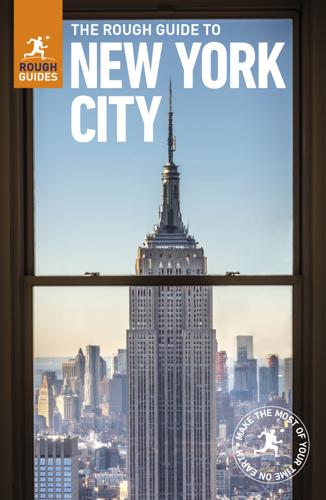
The Rough Guide to New York City
by
Rough Guides
Published 21 May 2018
It’s $100 to take part (and free to watch). New York Indian Film Festival Early May 212 594 3685, iaac.us. Screenings of films focusing on the Indian (South Asian) diaspora. Various locations, with tickets from $15. Ukrainian Festival Mid-May 212 674 1615, brama.com/stgeorge. This weekend festival (sponsored by St George Church) sees East 7th St – between Second and Third aves – filled with marvellous Ukrainian costumes, folk music and dance, plus foods and traditional crafts such as egg-painting. Most events are free. Celebrate Israel Parade Late May or early June 212 245 8200, celebrateisraelny.org. Since 1964 this celebration of Israeli independence attempts to display unity within New York’s ideologically and religiously diverse Jewish community.

Egypt Travel Guide
by
Lonely Planet
These were part of riverfront fortifications: at the time, the Nile would have lapped right up against them. Visitors can peer down around the southern tower, where excavations have revealed part of the ancient quay, several metres below street level. The Greek Orthodox Monastery and Church of St George sit on top of the northern tower. Greek Orthodox Monastery & Church of St George Church (8am-4pm) The first doorway north of the museum gate leads to the Greek Orthodox Monastery and Church of St George. St George (Mar Girgis) is one of the region’s most popular Christian saints. A Palestinian conscript in the Roman army, he was executed in AD 303 for resisting Emperor Diocletian’s decree forbidding the practice of Christianity.
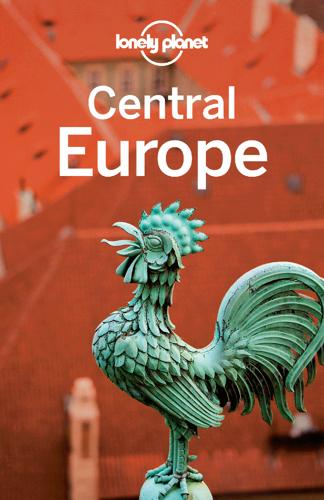
Central Europe Travel Guide
by
Lonely Planet
Piran Sights 1Aquarium PiranC3 2BaptisteryD2 3Bell TowerD2 4Cathedral of St GeorgeD1 5Church of St ClementA1 6CisternB2 7Medieval City WallC2 8NoriksubB1 Parish Museum of St George(see 4) 9Punta LighthouseA1 10Sergej Mašera Maritime MuseumD3 11Venetian HouseD2 Sleeping 12Alibi B11 (Reception)B1 13Alibi B14B1 14Alibi T60C2 15Hotel TartiniD3 16Miracolo di MareD5 17Val HostelB1 18Vista ApartmentB2 Eating 19FloraB1 20GalebB1 21Ham HamC5 22MarketC2 23MercatorC2 24Riva PiranA1 Drinking 25Cafe TeaterC3 26Žižola KantinaD3 Sights Cathedral of St George CHURCH (Adamičeva ul 2) Piran is watched over by the hilltop cathedral mostly dating from the 17th century. If time allows, visit the attached Parish Museum of St George ( 673 34 40; admission €1; 10am-1pm & 5-7pm Mon-Fri, 11am-7pm Sat & Sun) , which contains church plate, paintings and a lapidary in the crypt.

Lonely Planet Turkey (Travel Guide)
by
Lonely Planet
,
James Bainbridge
,
Brett Atkinson
,
Steve Fallon
,
Jessica Lee
,
Virginia Maxwell
,
Hugh McNaughtan
and
John Noble
Published 31 Jan 2017
Yılanlı KiliseCHURCH (Snake Church; GOOGLE MAP ) Many of the frescoes are damaged, but it's possible to make out the one outlining the punishments for sinners, especially the three-headed snake with a sinner in each mouth and the nipple-clamped women (ouch) who didn't breastfeed their young. Kırk Dam Altı KiliseCHURCH (St George's Church; GOOGLE MAP ) Although badly graffitied, the frescoes are still gloriously vibrant, and above the entrance you can see St George on a white horse, slaying a three-headed snake. Direkli KiliseCHURCH ( GOOGLE MAP ; Belisırma village) This cross-shaped church has four columns, with lovely partially preserved frescoes of saints.

Lonely Planet France
by
Lonely Planet Publications
Published 31 Mar 2013
Sights Bibliothèque Humaniste LIBRARY (1 rue de la Bibliothèque; adult/child €4.20/2.70; 9am-noon & 2-6pm Mon & Wed-Fri, 9am-noon Sat) Founded in 1452, the Humanist Library’s stellar collection features a 7th-century book of Merovingian liturgy, a copy of Cosmographiae Introductio (printed in 1507), in which the New World was referred to as ‘America’ for the first time, and the first written mention of the Christmas tree (1521). Vieux Sélestat HISTORIC QUARTER Church spires rise gracefully above the red rooftops of the old town, which hugs the left bank of the River Ill. Some of the finest examples of half-timbered and trompe-l’œil buildings can be found along the medieval quai des Tanneurs. Église St-Georges CHURCH (place St-Georges; 8am-6pm) One of Alsace’s most striking churches, this Gothic giant, built from weighty red sandstone and sporting a colourful mosaic-tile roof, is illuminated by curtains of stained glass in the choir. Montagne des Singes PARK (www.montagnedessinges.com; Kintzheim; adult/child €8.50/5; 10am-noon & 1-6pm, closed Dec-Mar) Kids love to feed the free-roaming Barbary macaques and their cheeky infants popcorn (special monkey popcorn, of course) at this 6-acre woodland park.
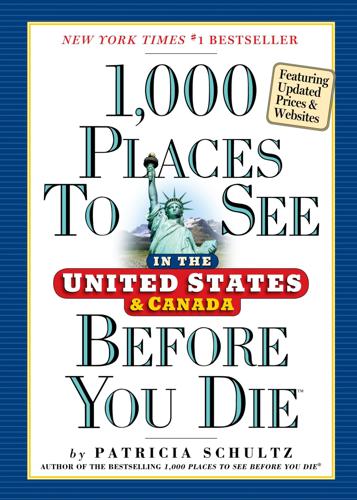
1,000 Places to See in the United States and Canada Before You Die, Updated Ed.
by
Patricia Schultz
Published 13 May 2007
That was the year a group of Germans from Philadelphia bought land with the hopes of creating a colony that would be “German in every particular.” Today Hermann retains its delightfully Old World character, with original 19th-century architecture, interesting shops, and gnarled grapevines. St. George Church’s mid-19th-century steeple towers over the quaint town of Hermann. When the first settlers arrived they found steep terrain unsuitable for farming, but they noted the abundance of wild vines and set about making wine. By 1900 one out of every twelve bottles of wine sold in America came from Missouri, nearly all of it from Hermann’s 66 wineries.